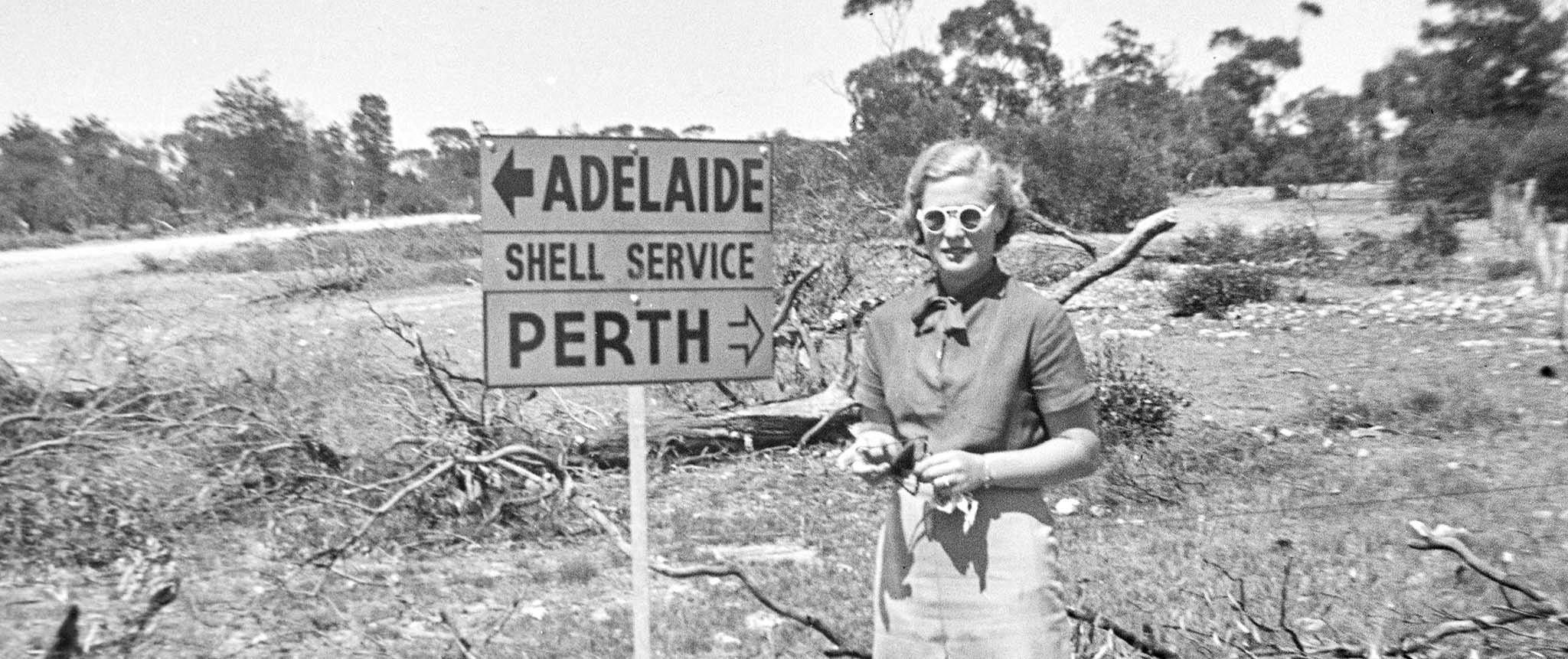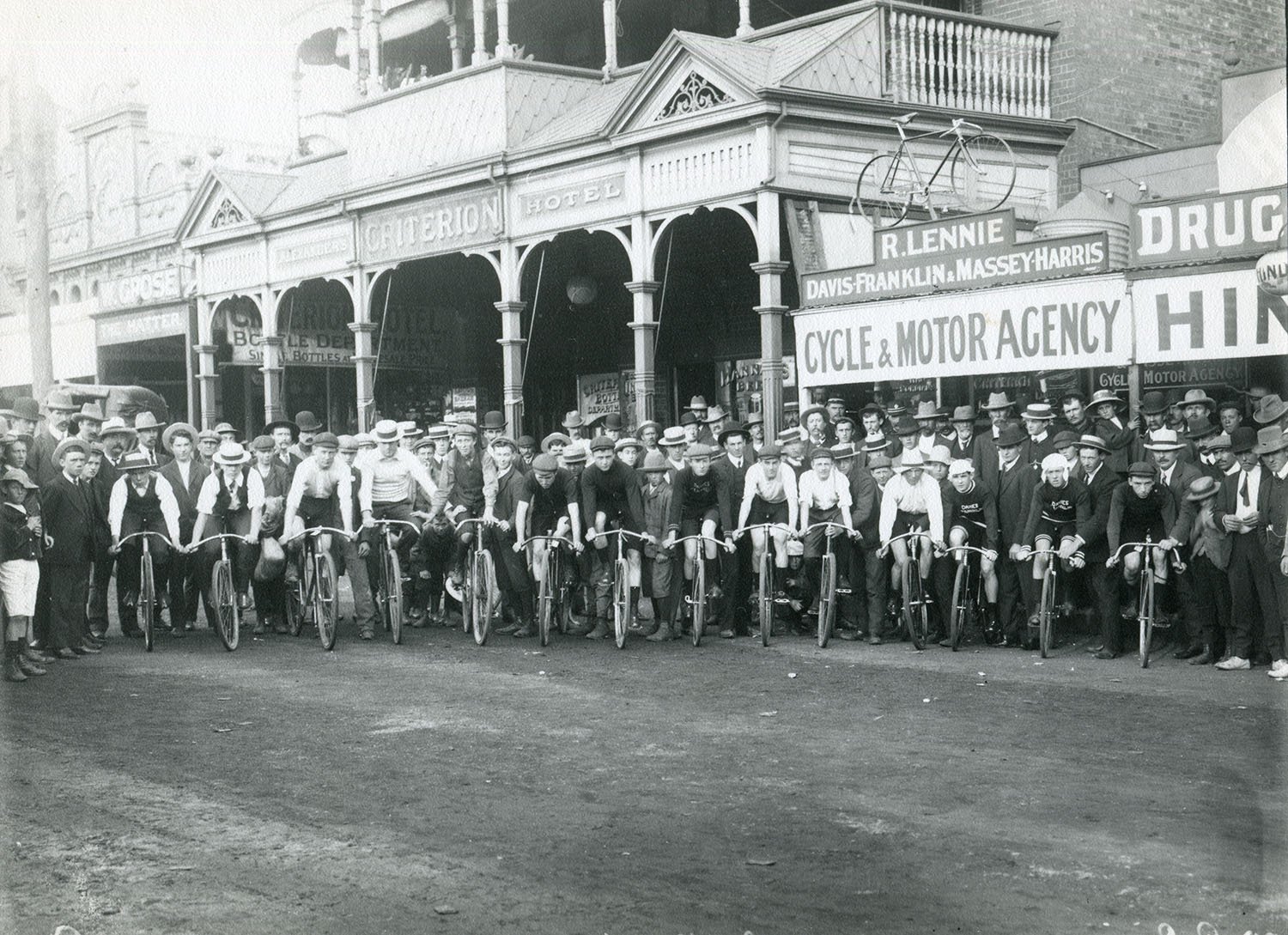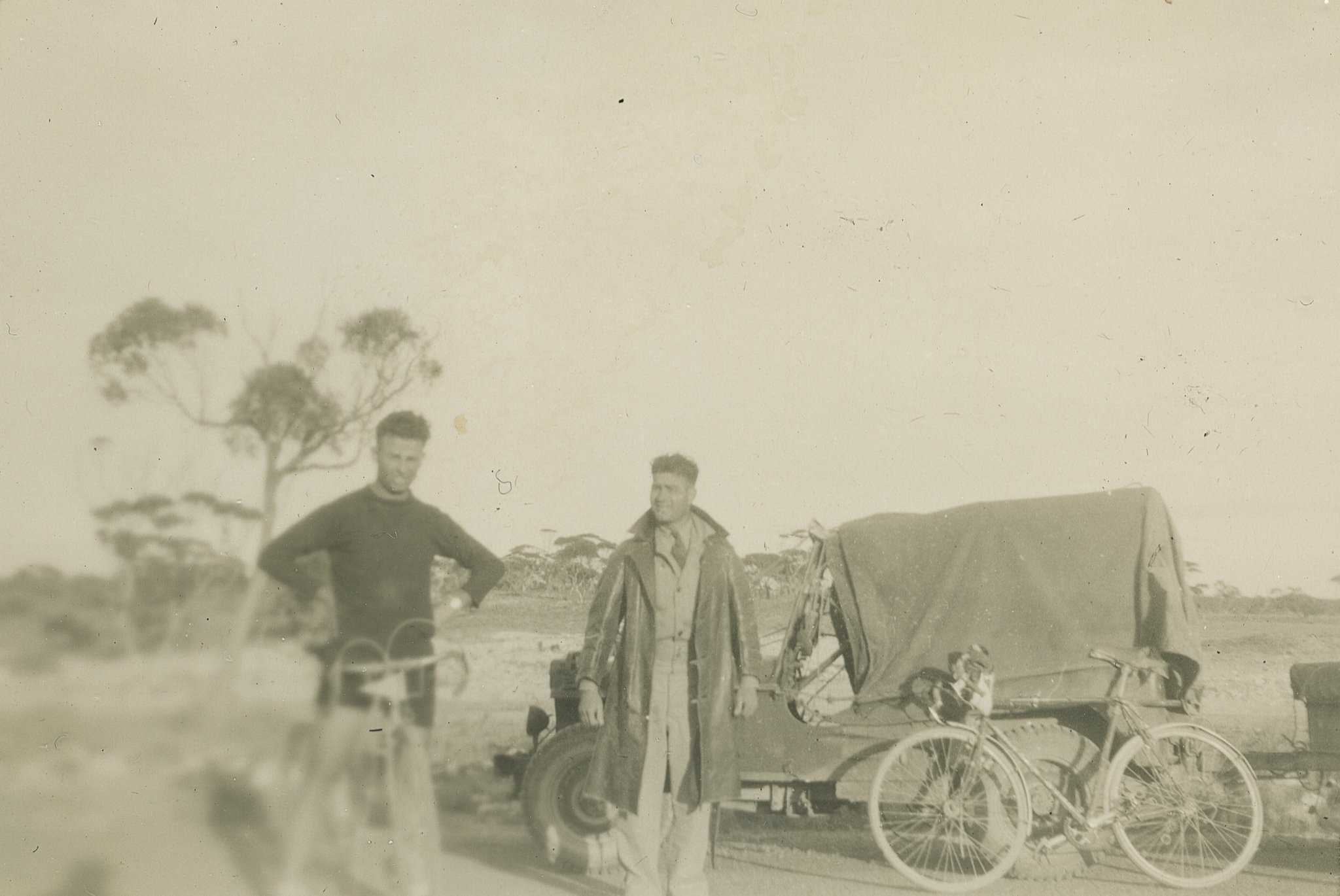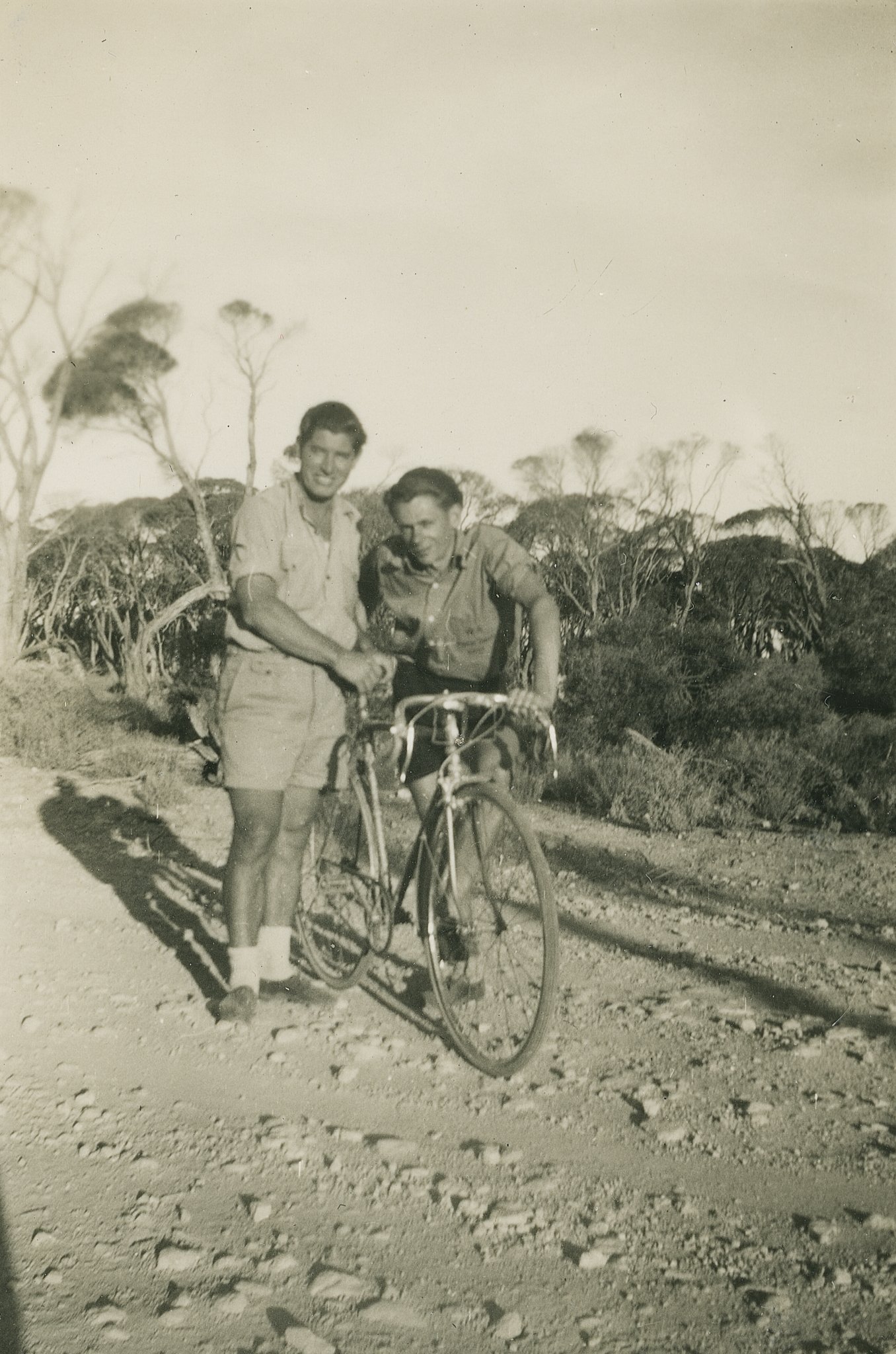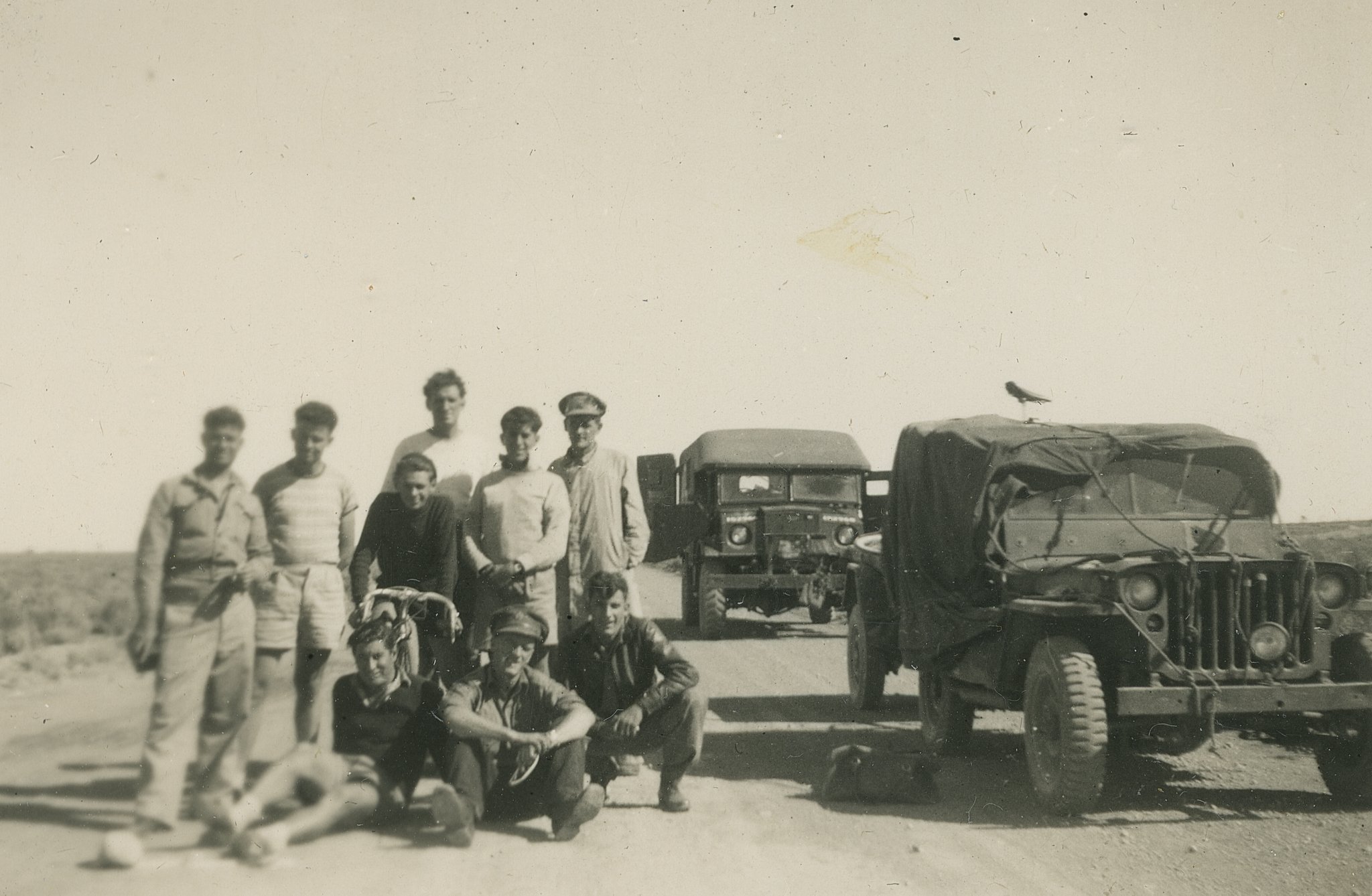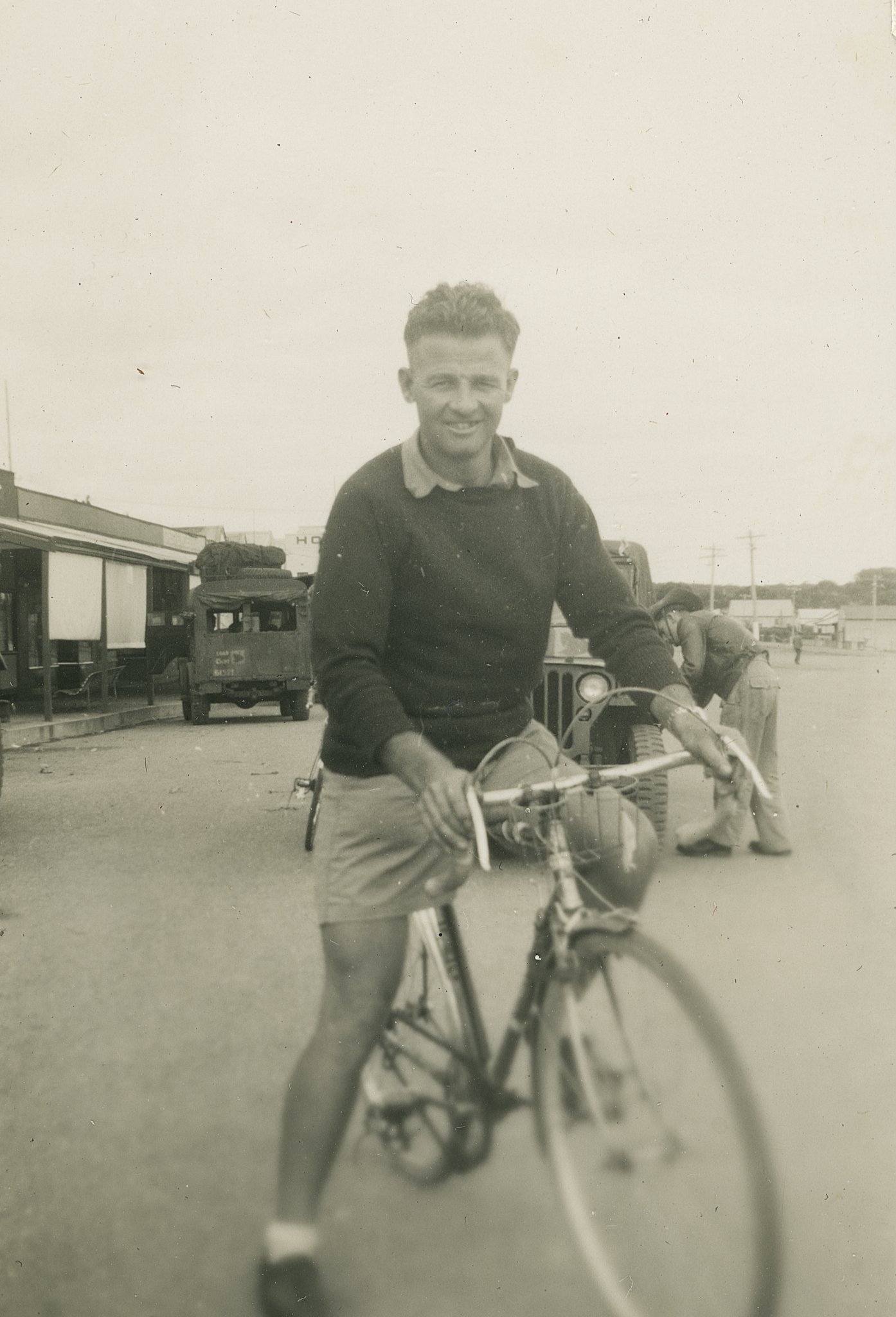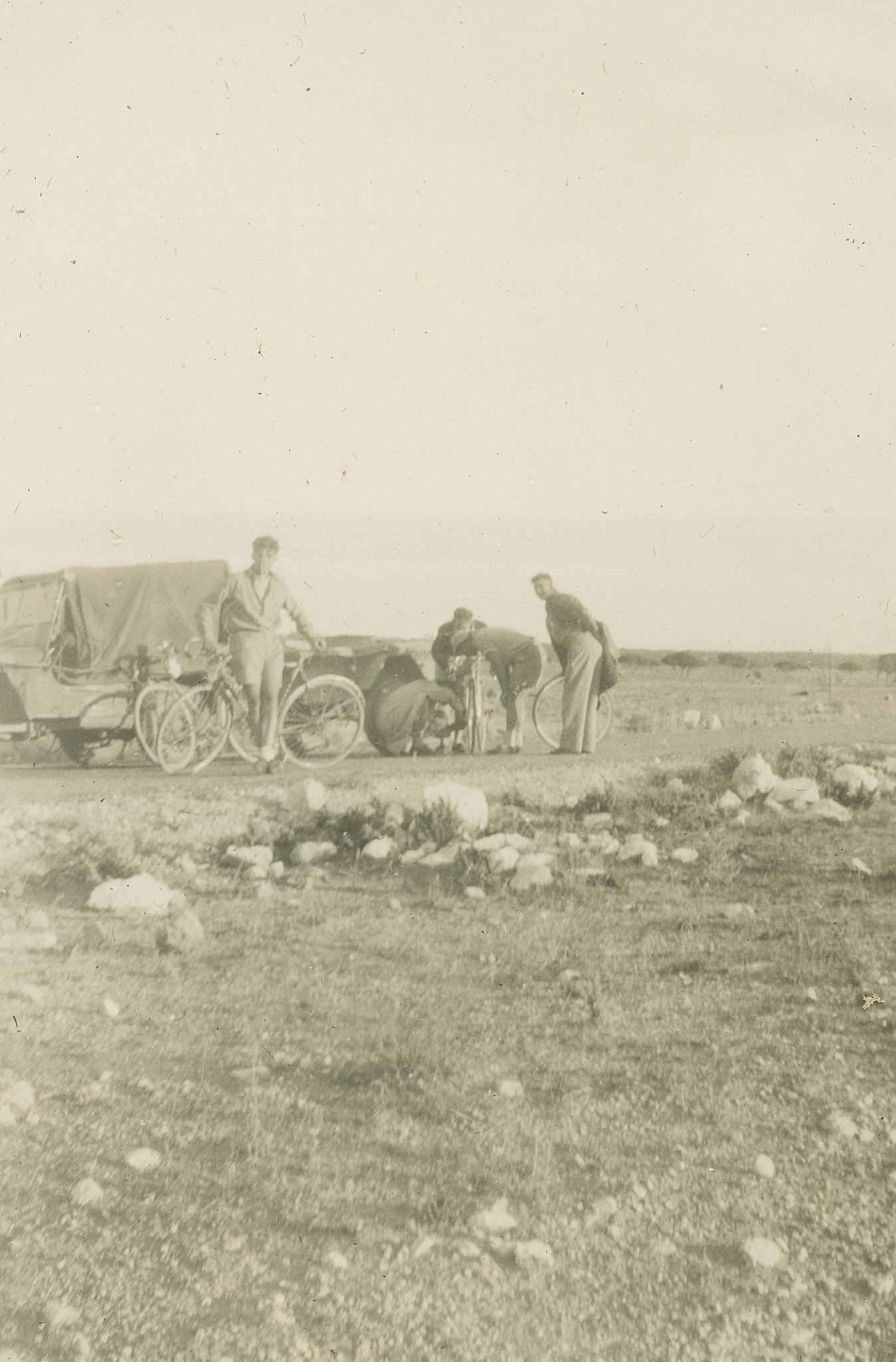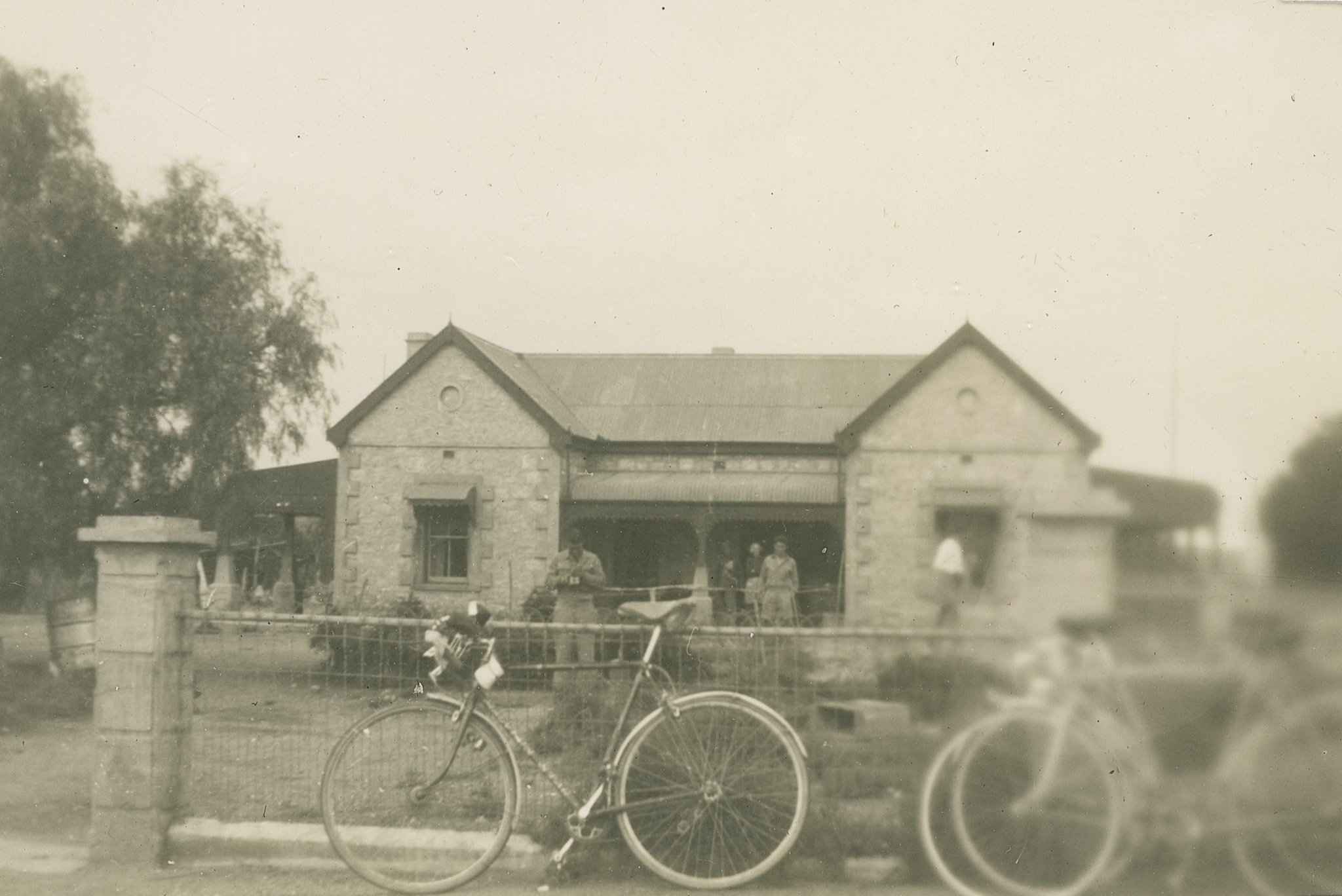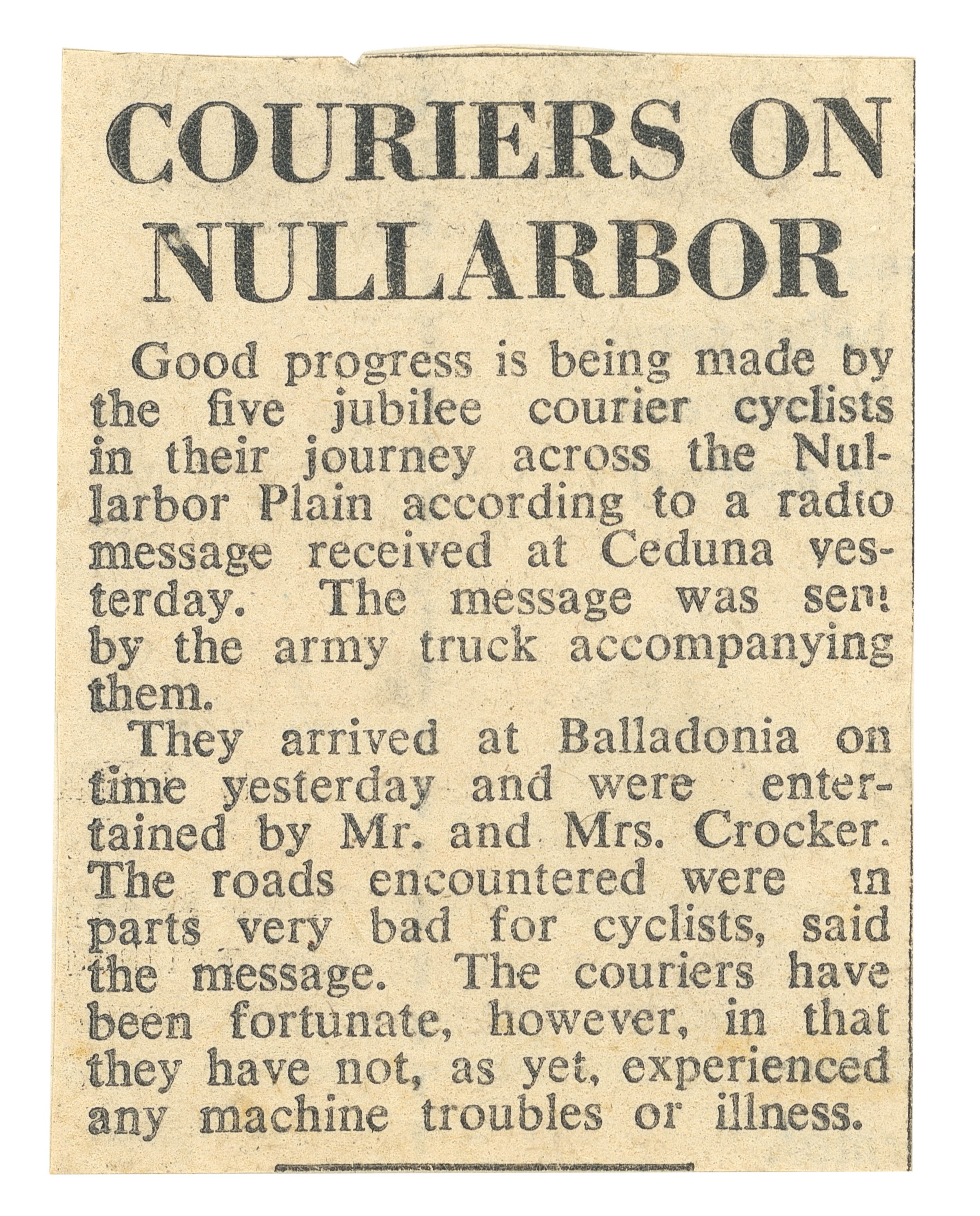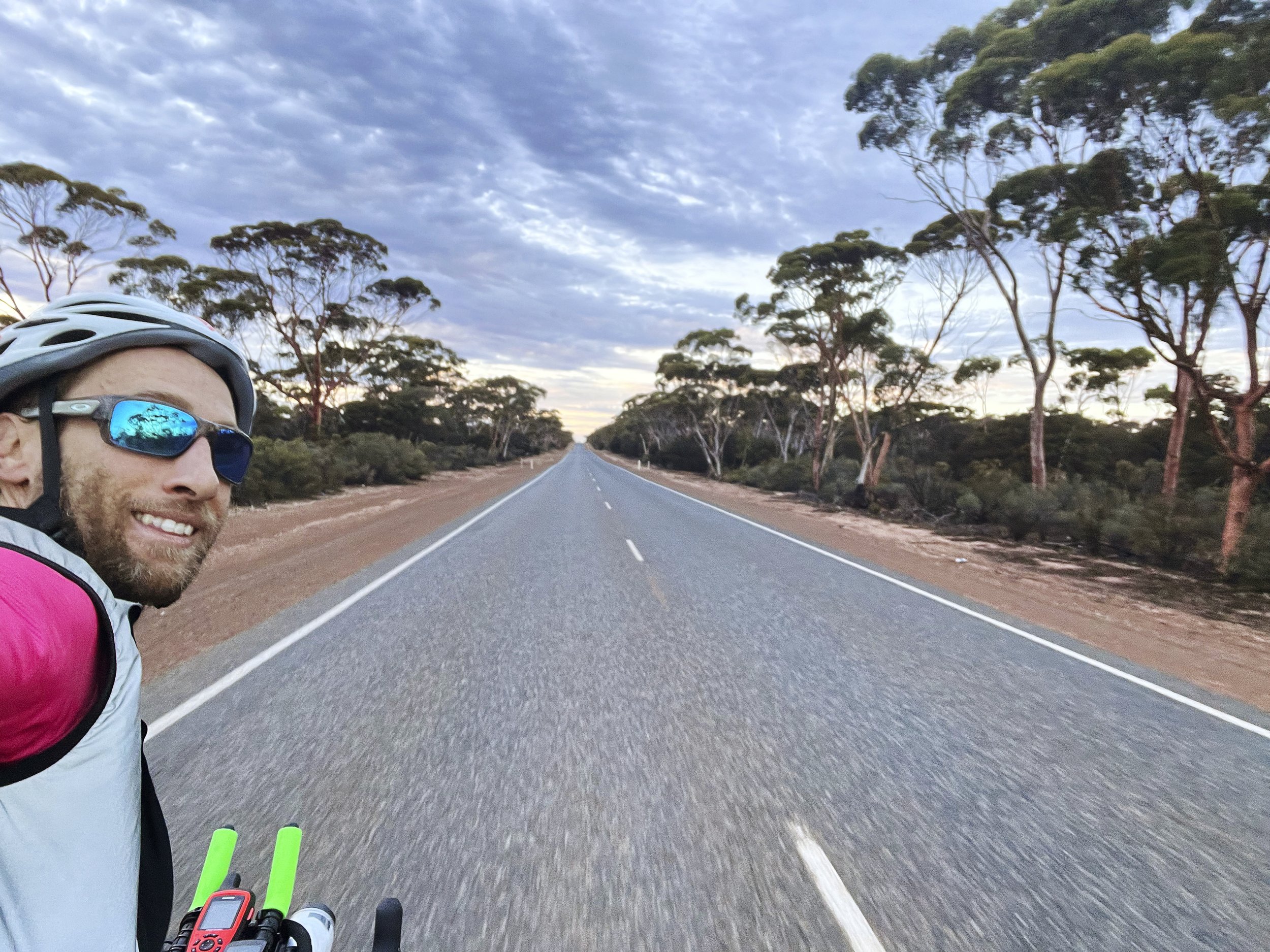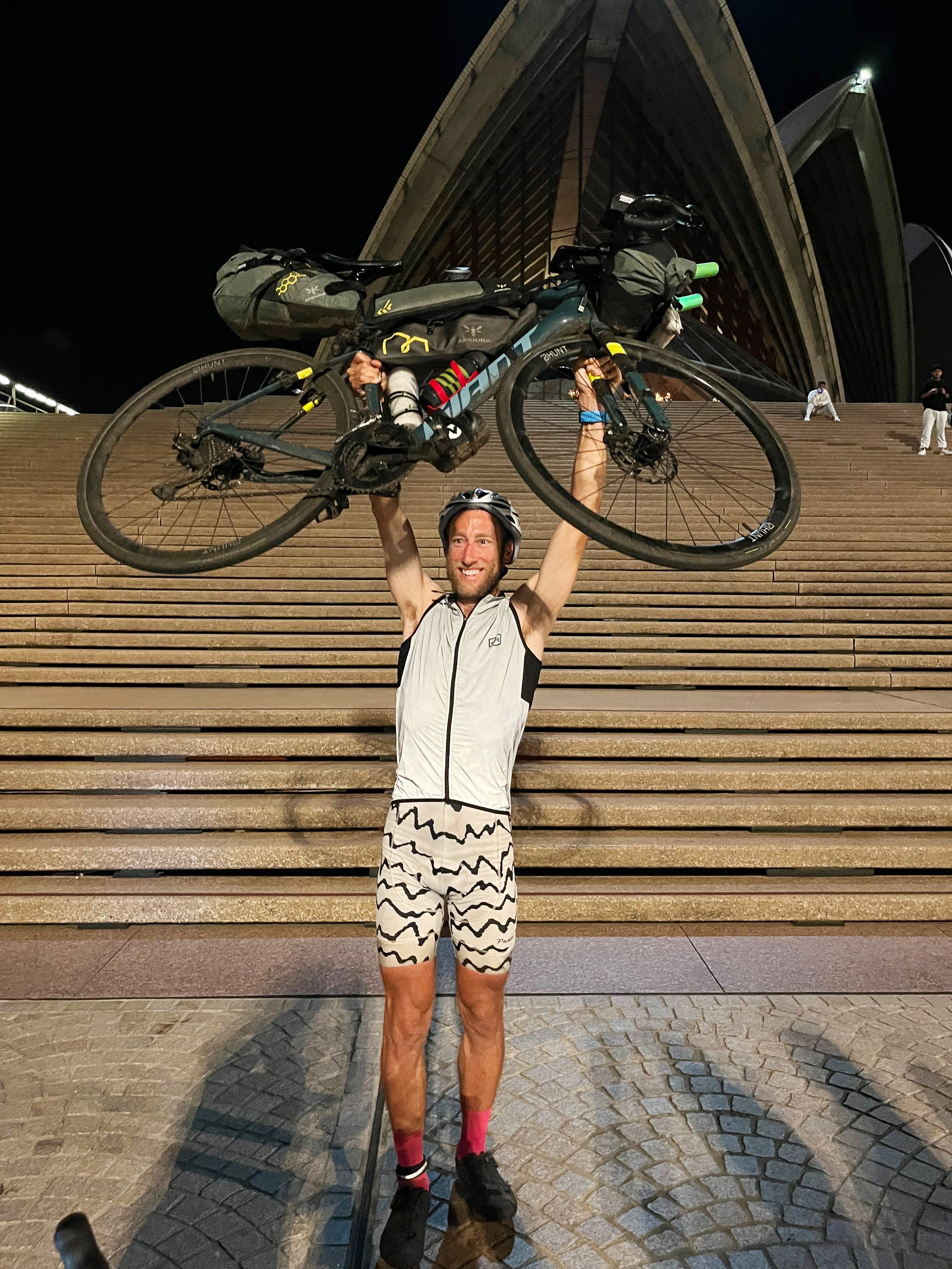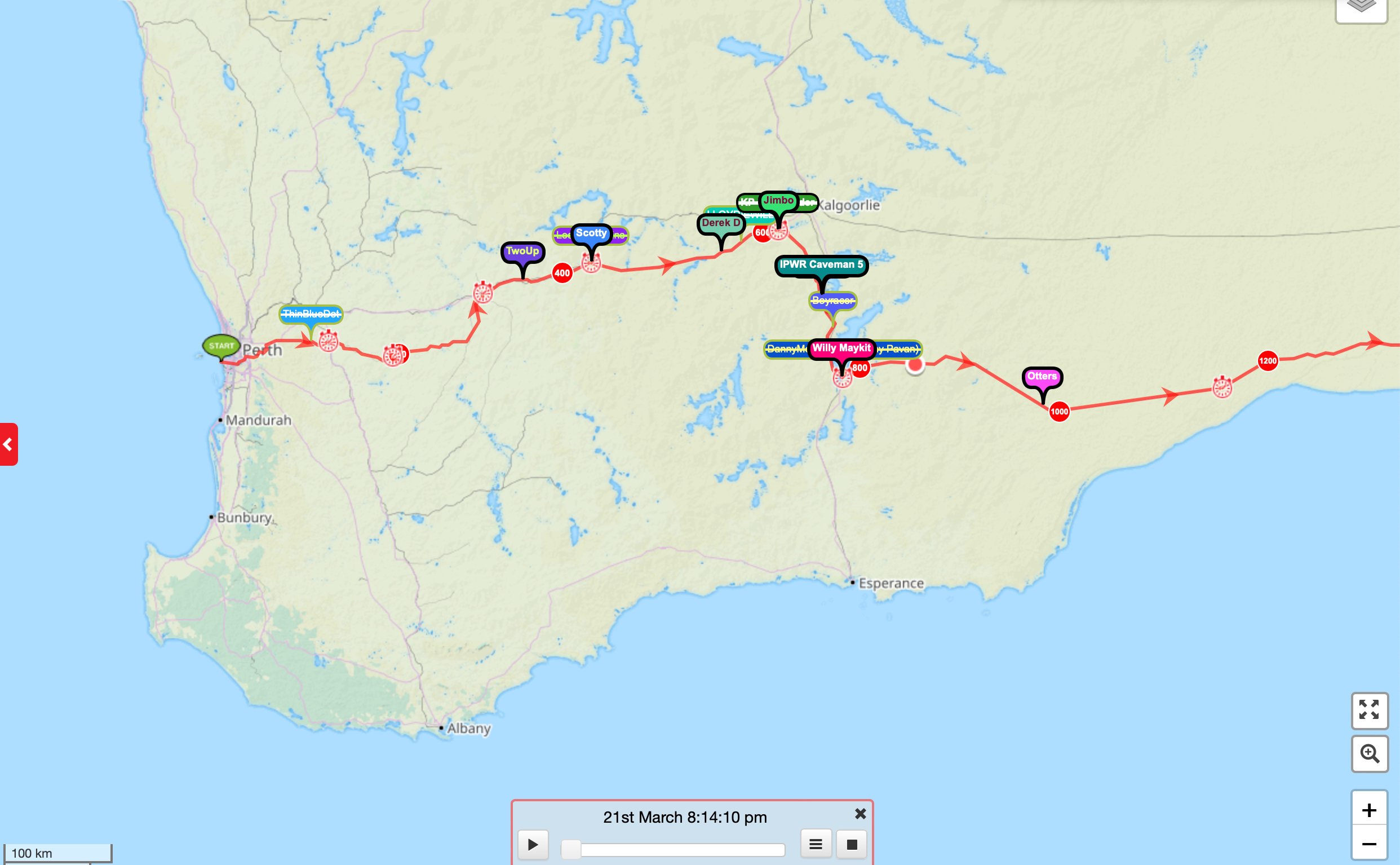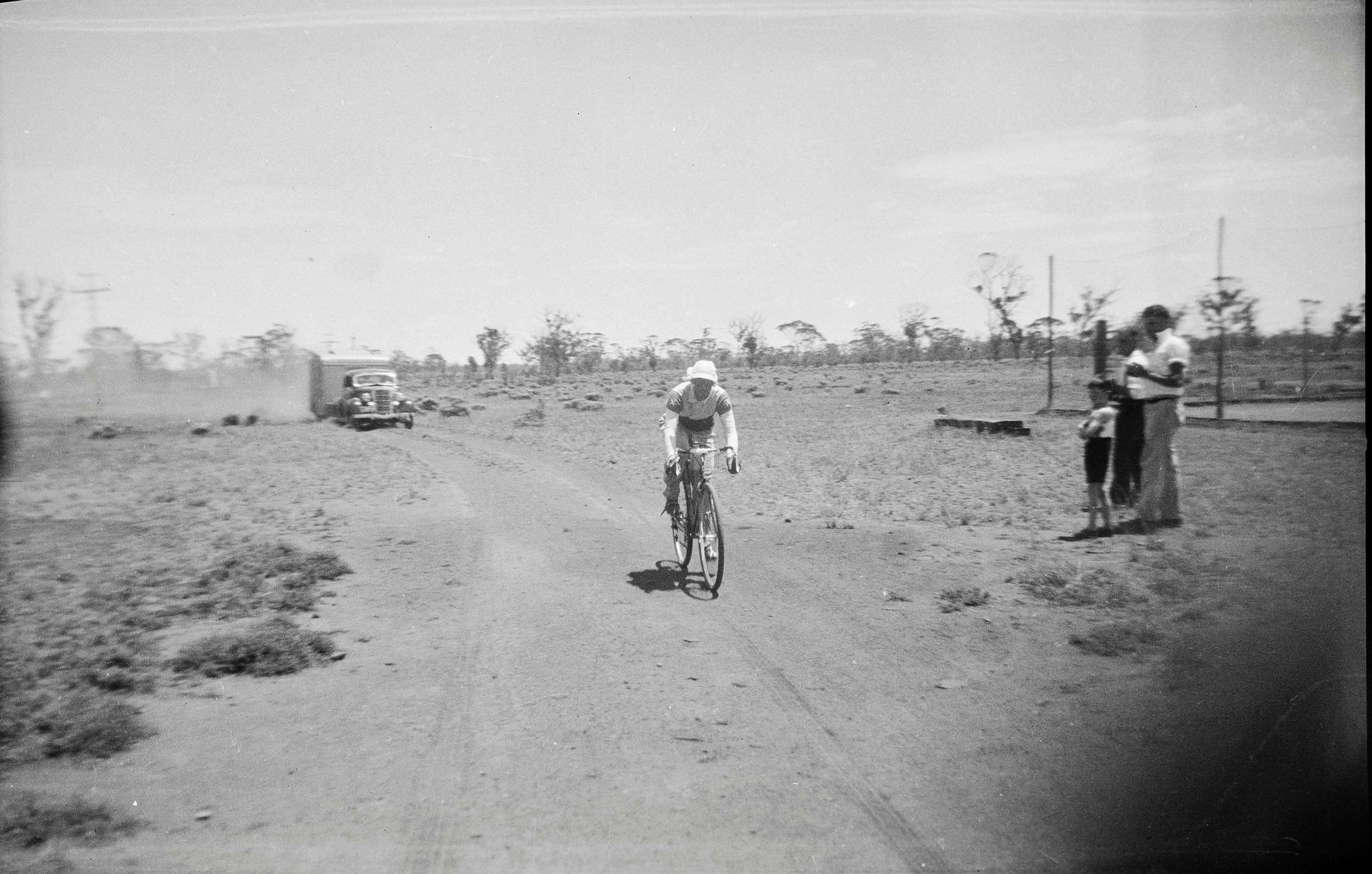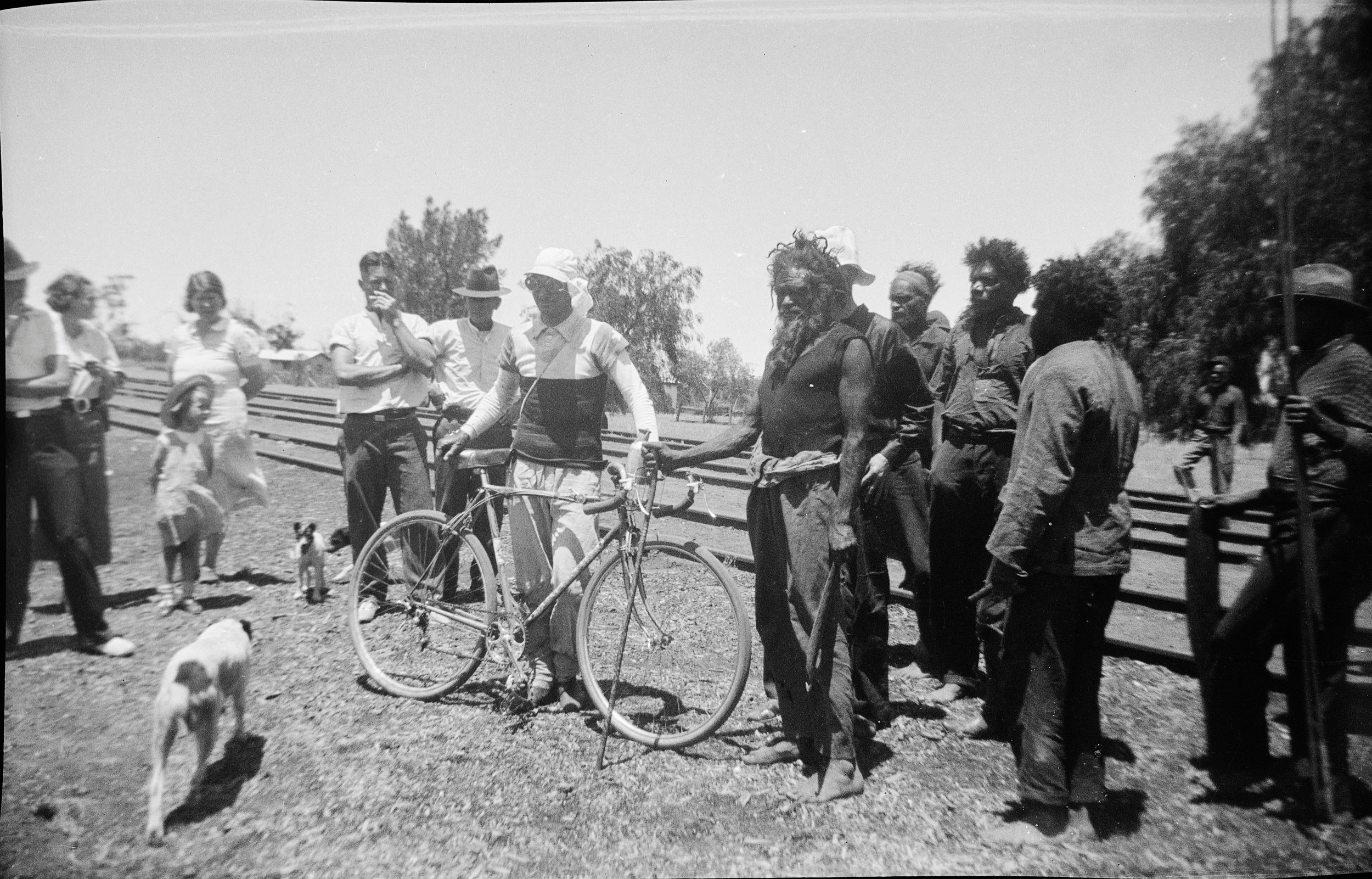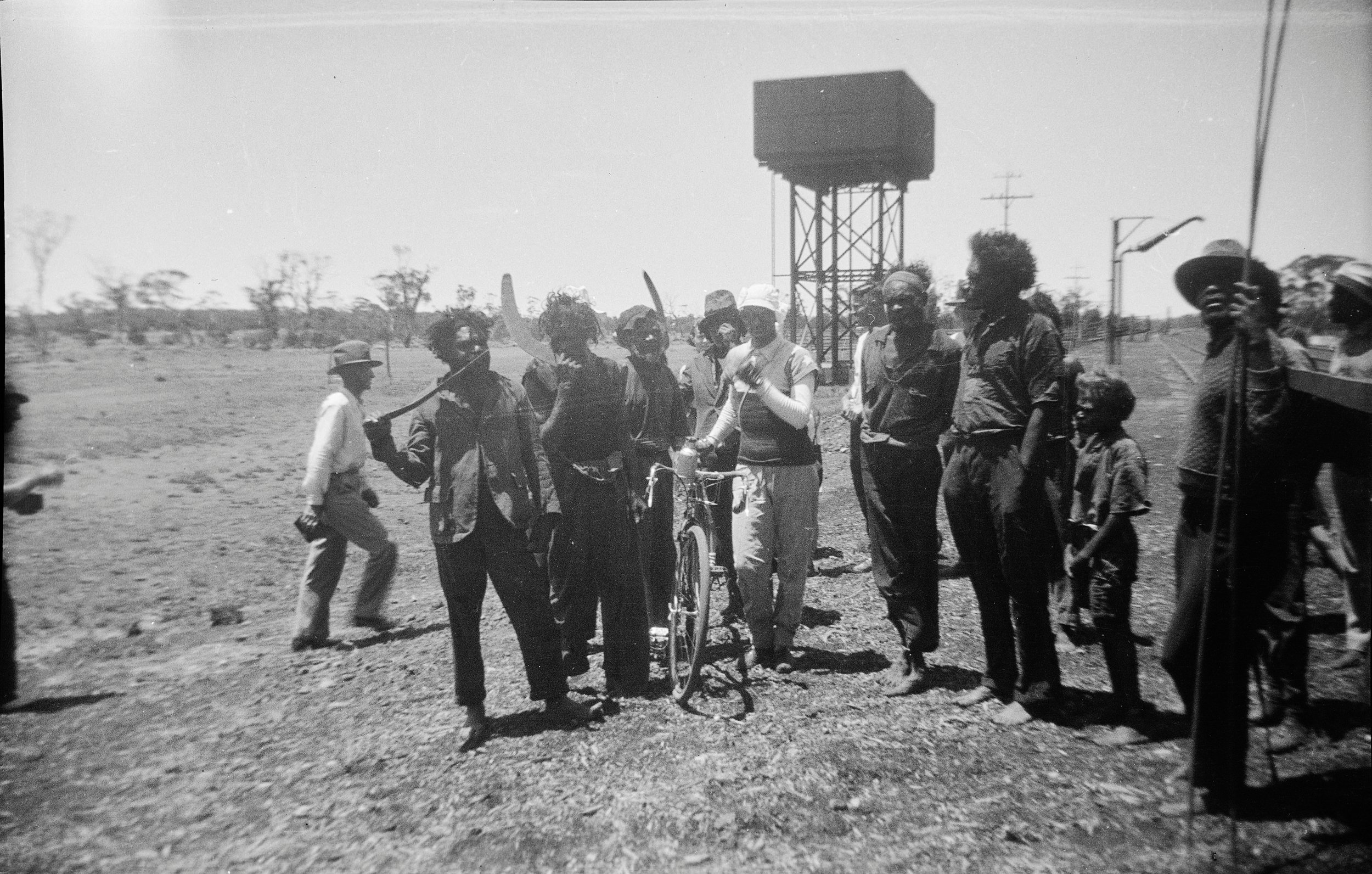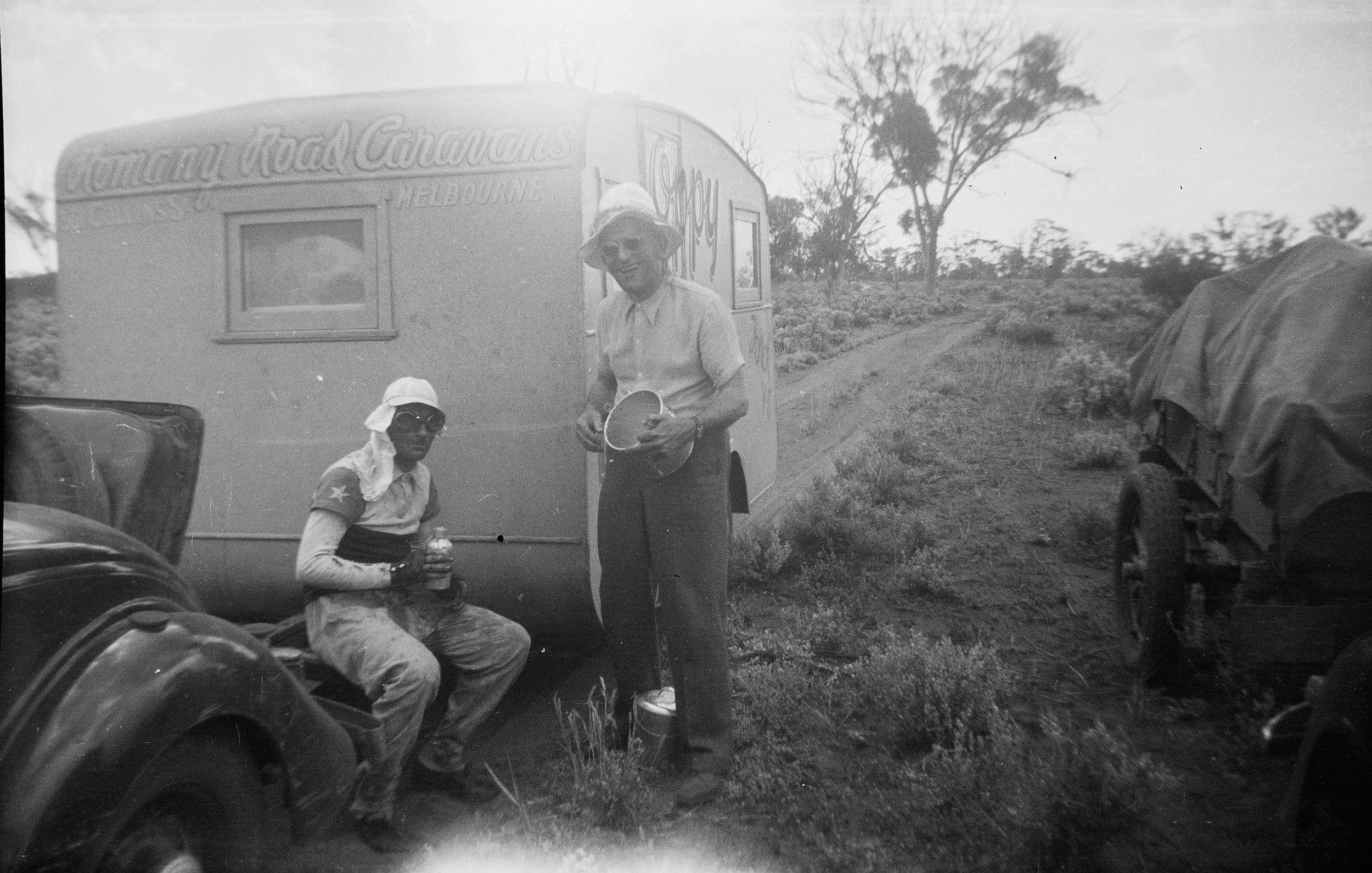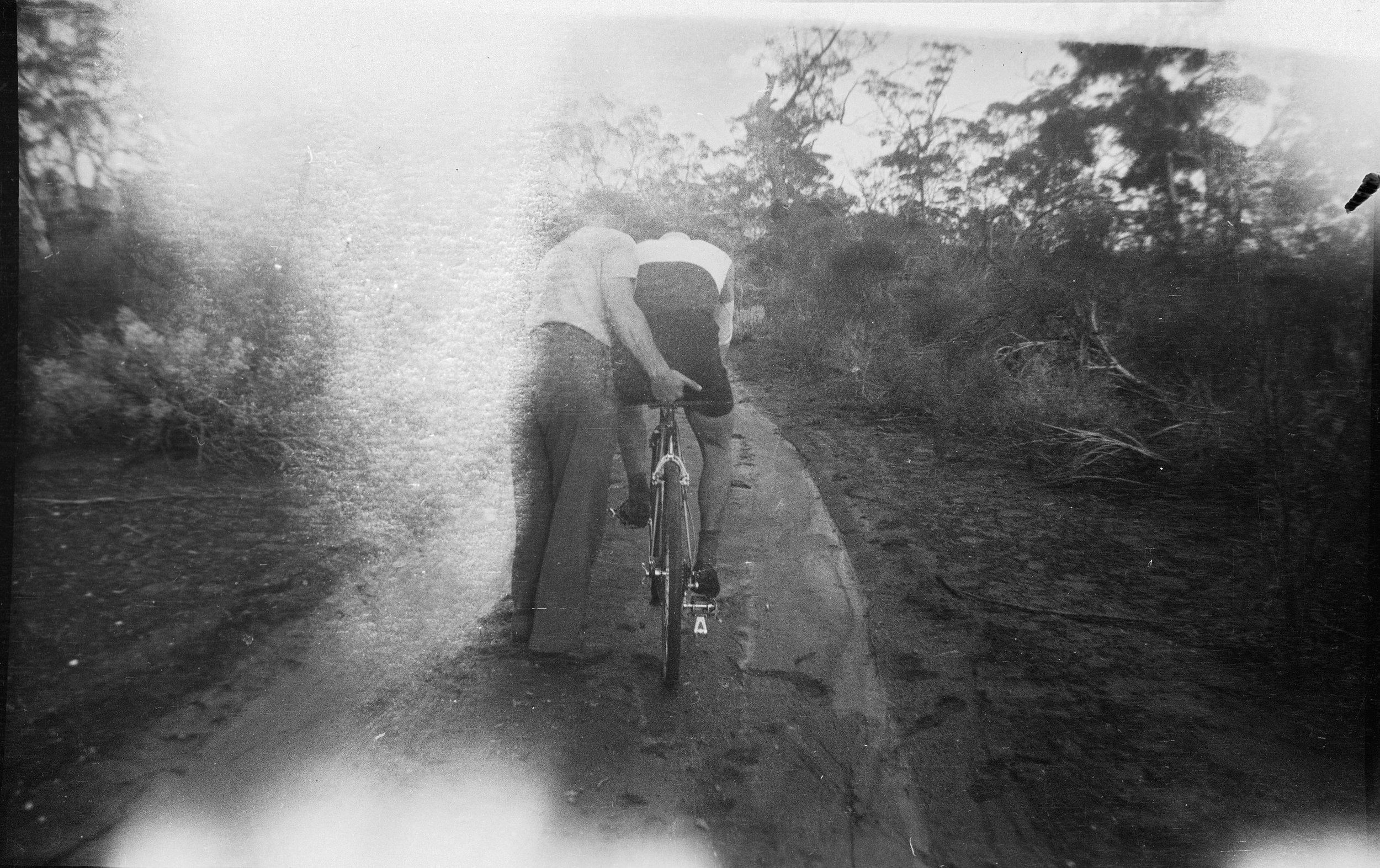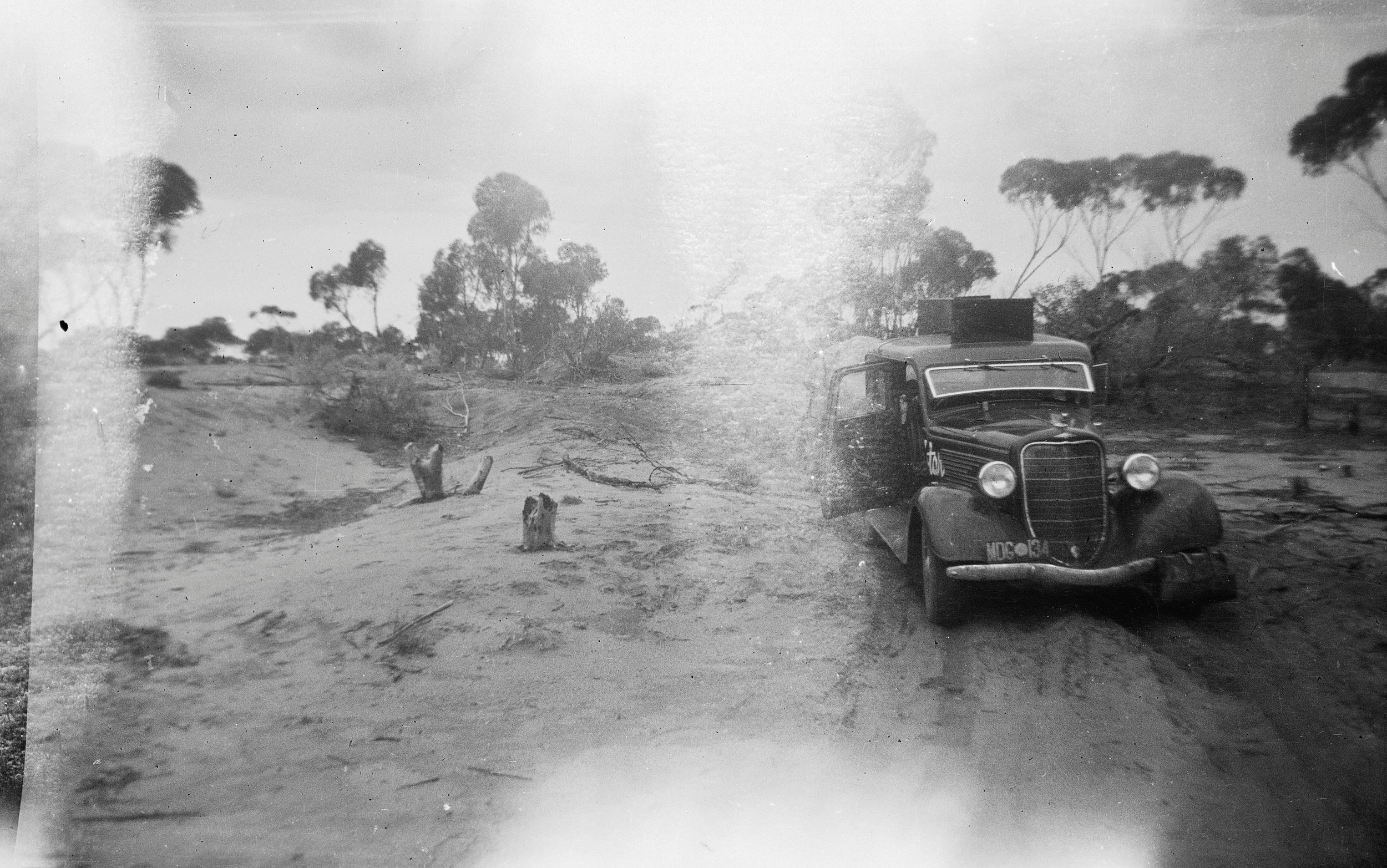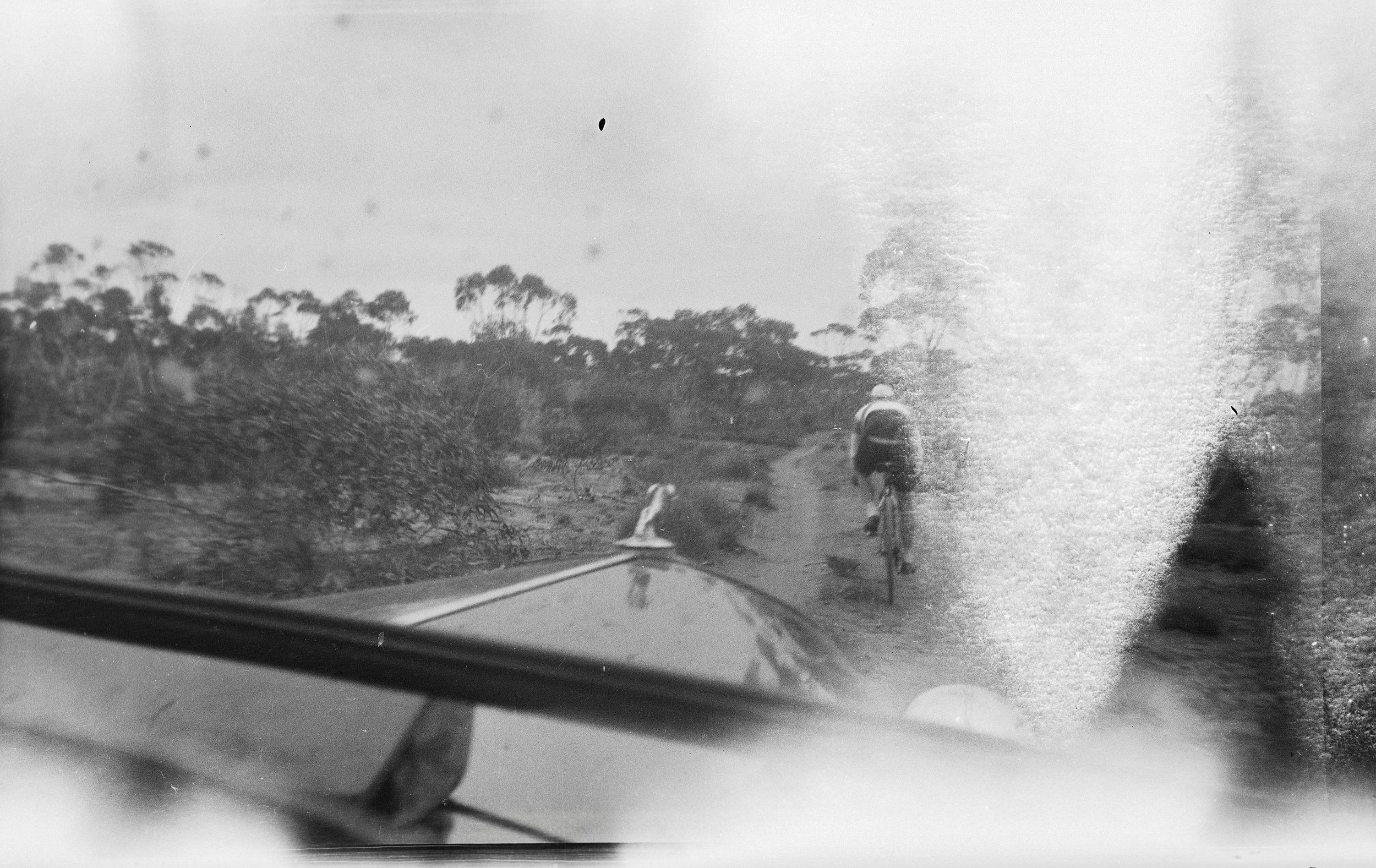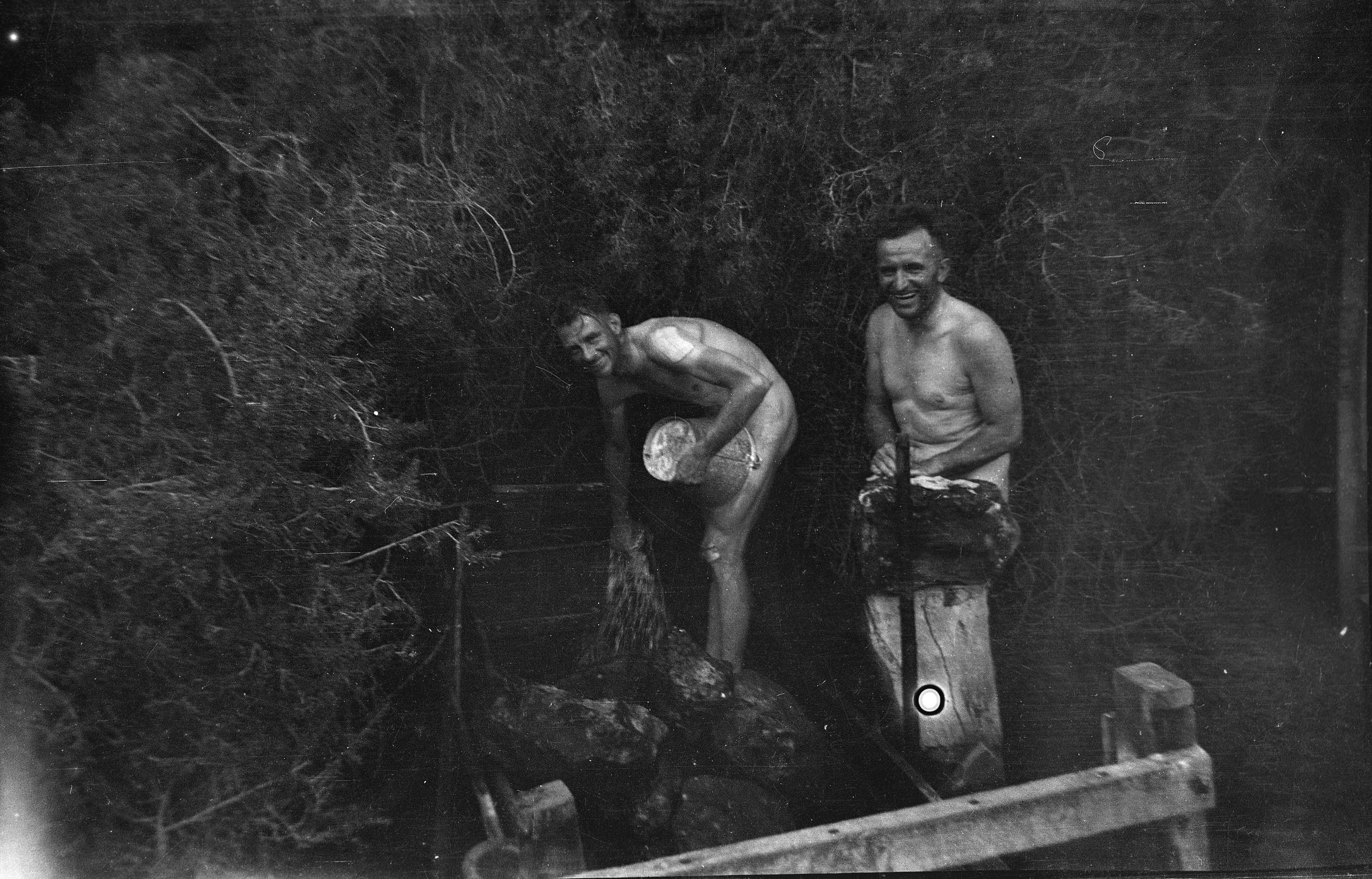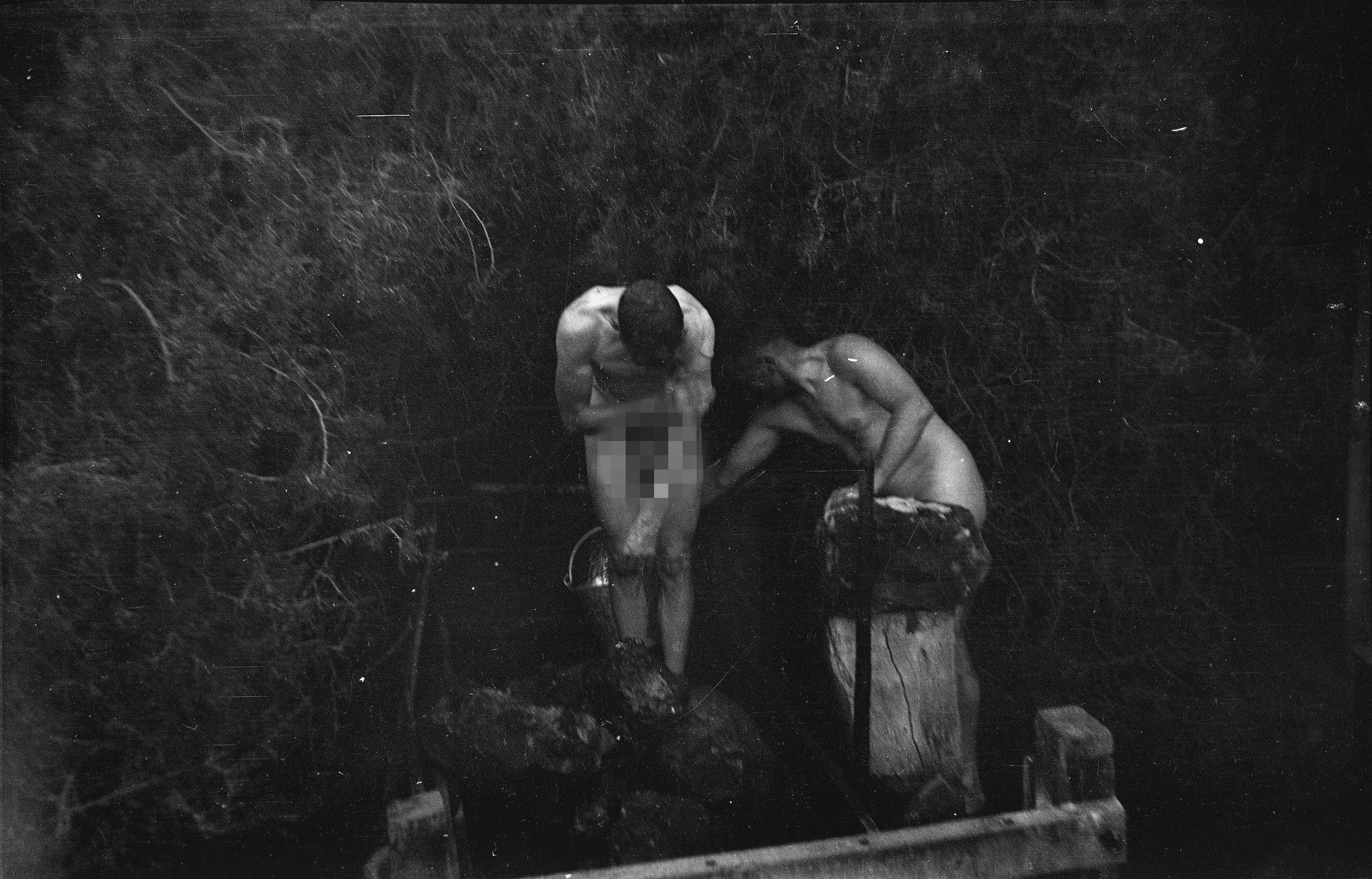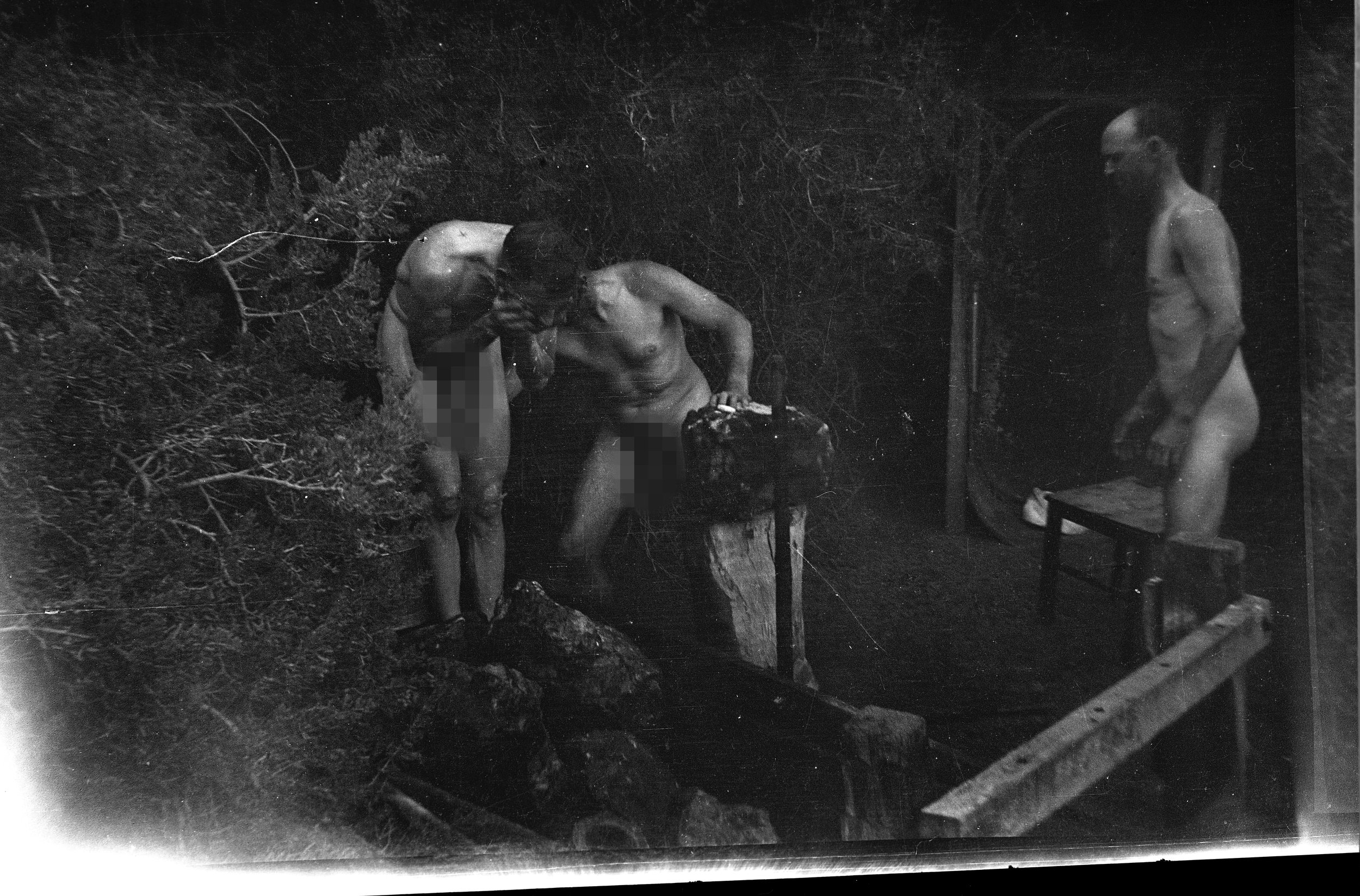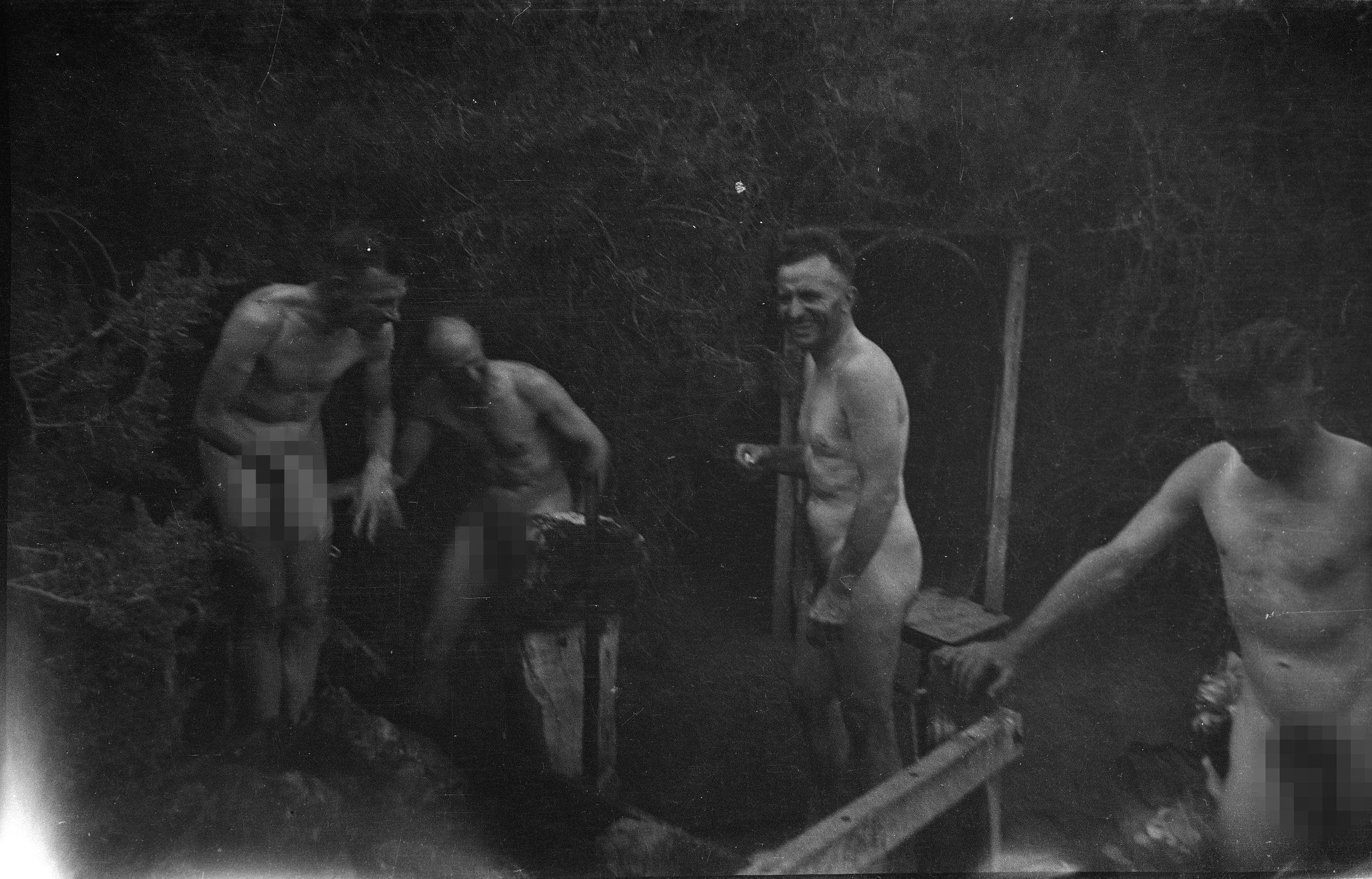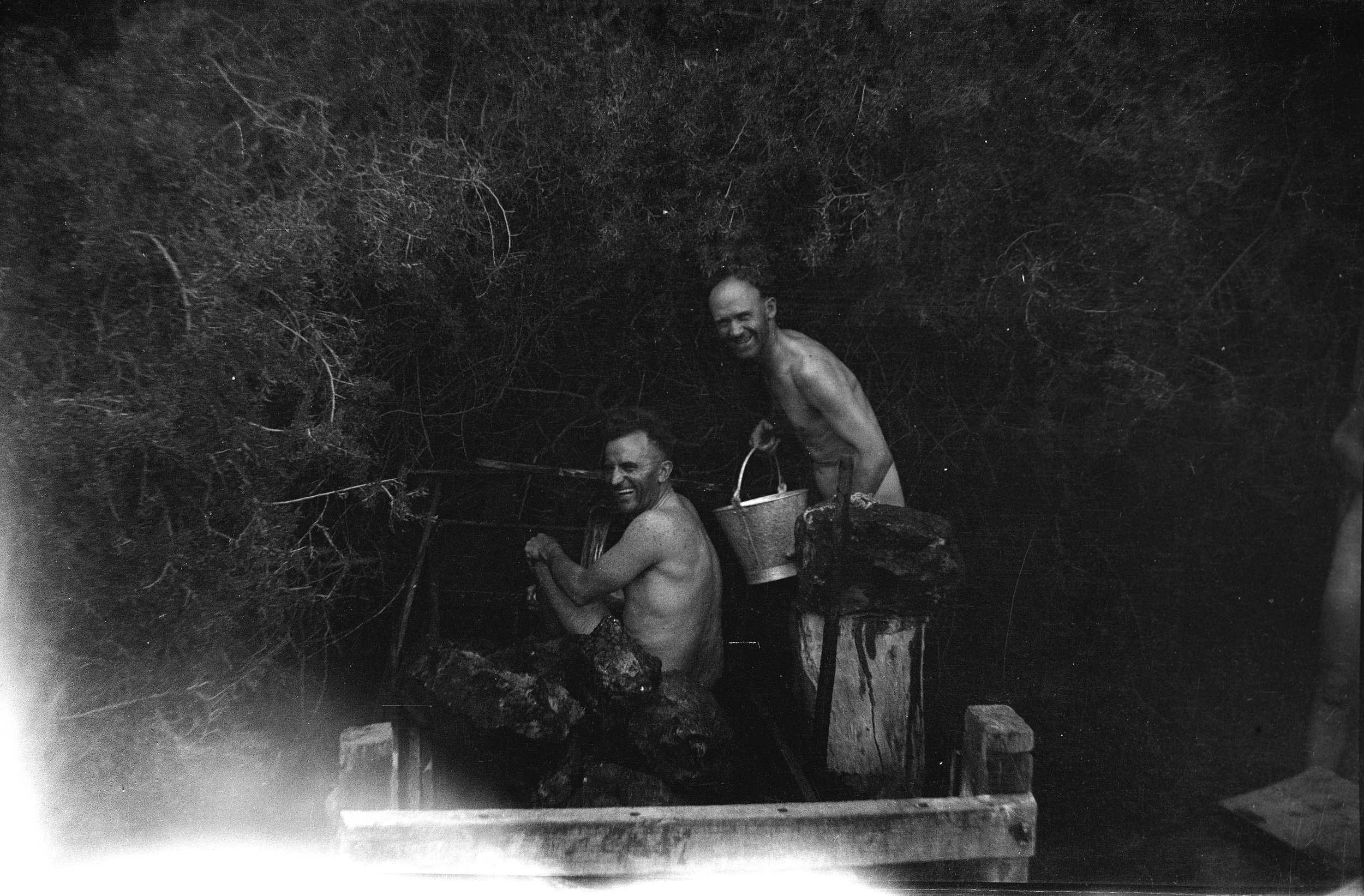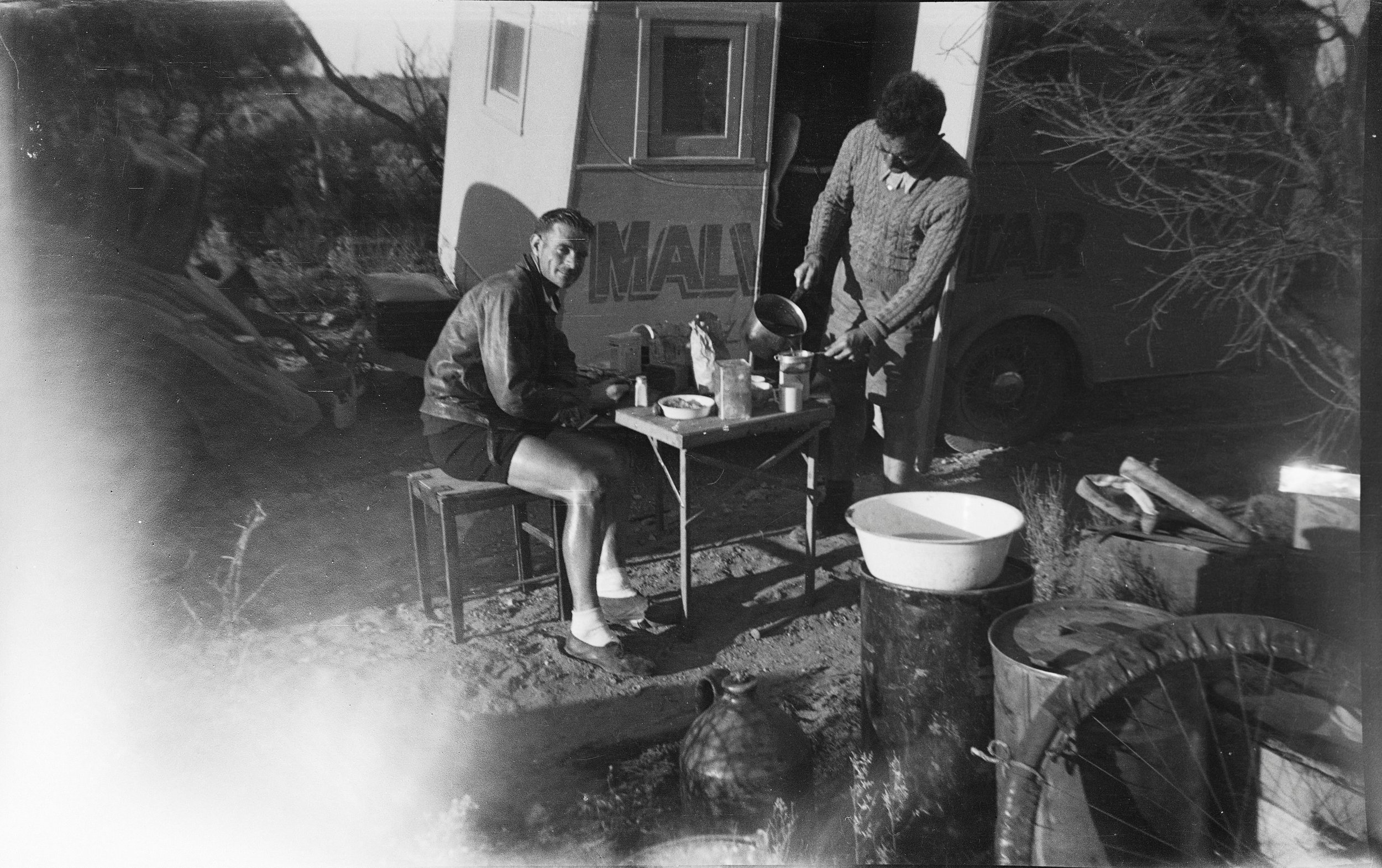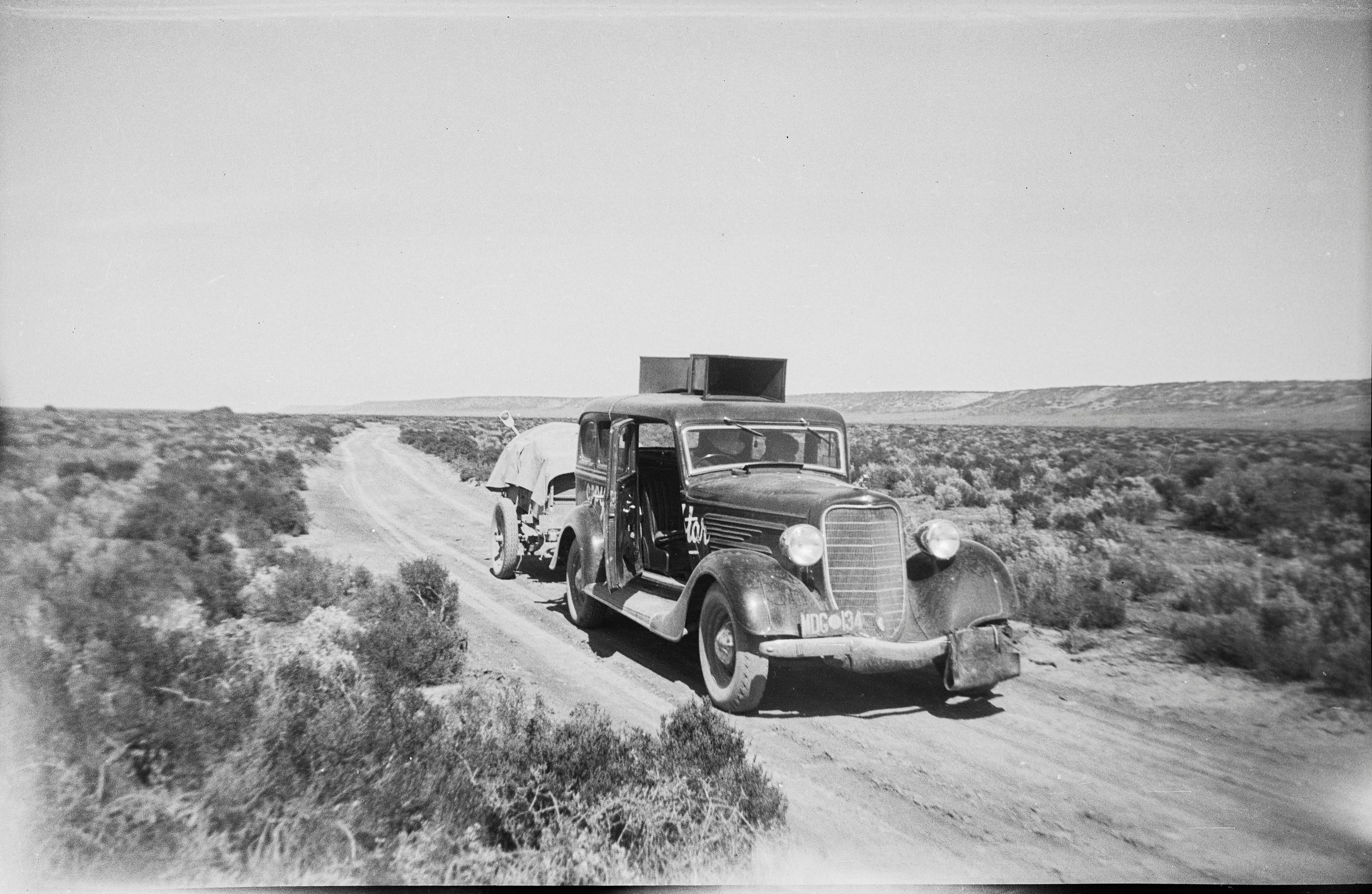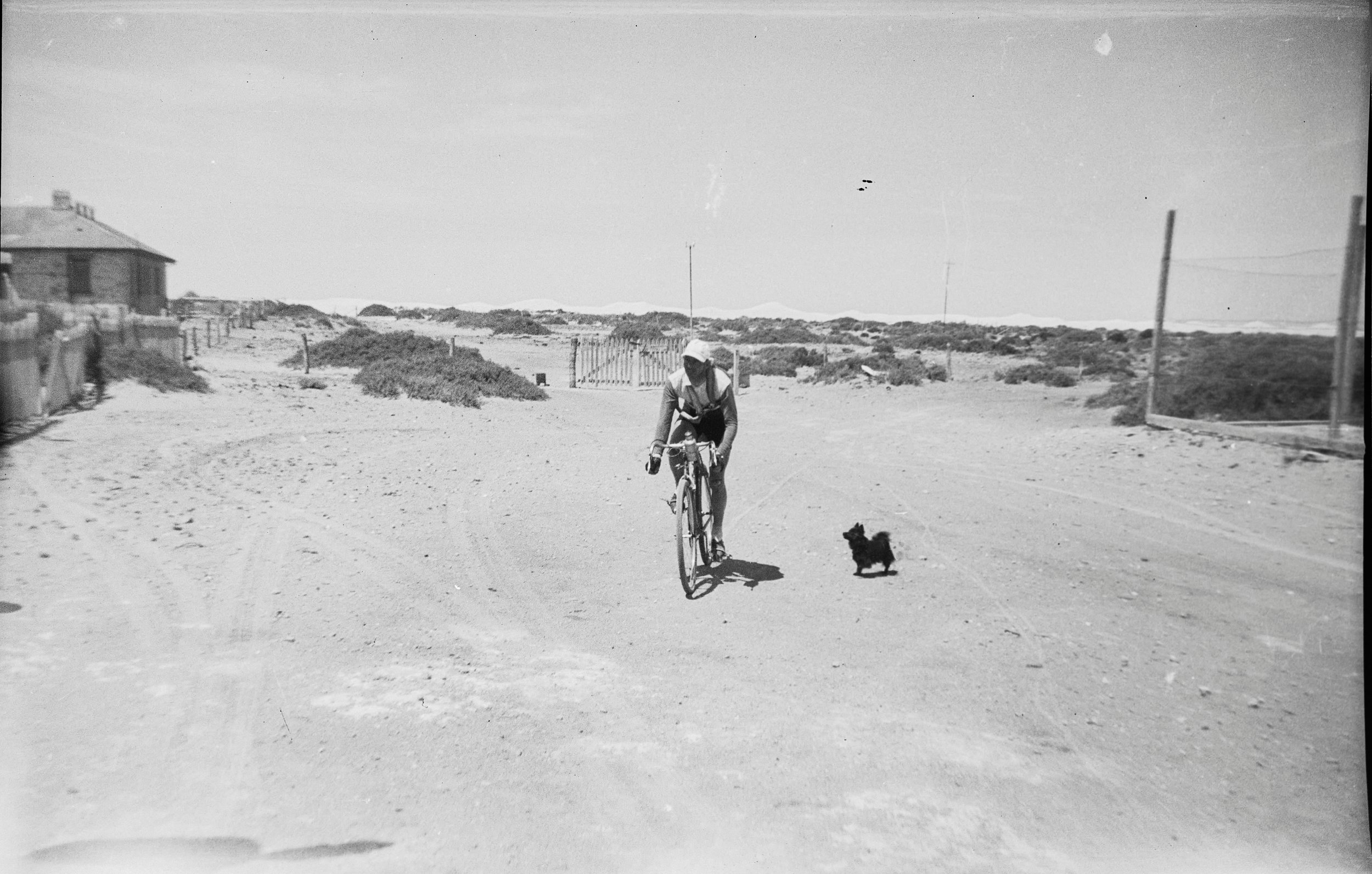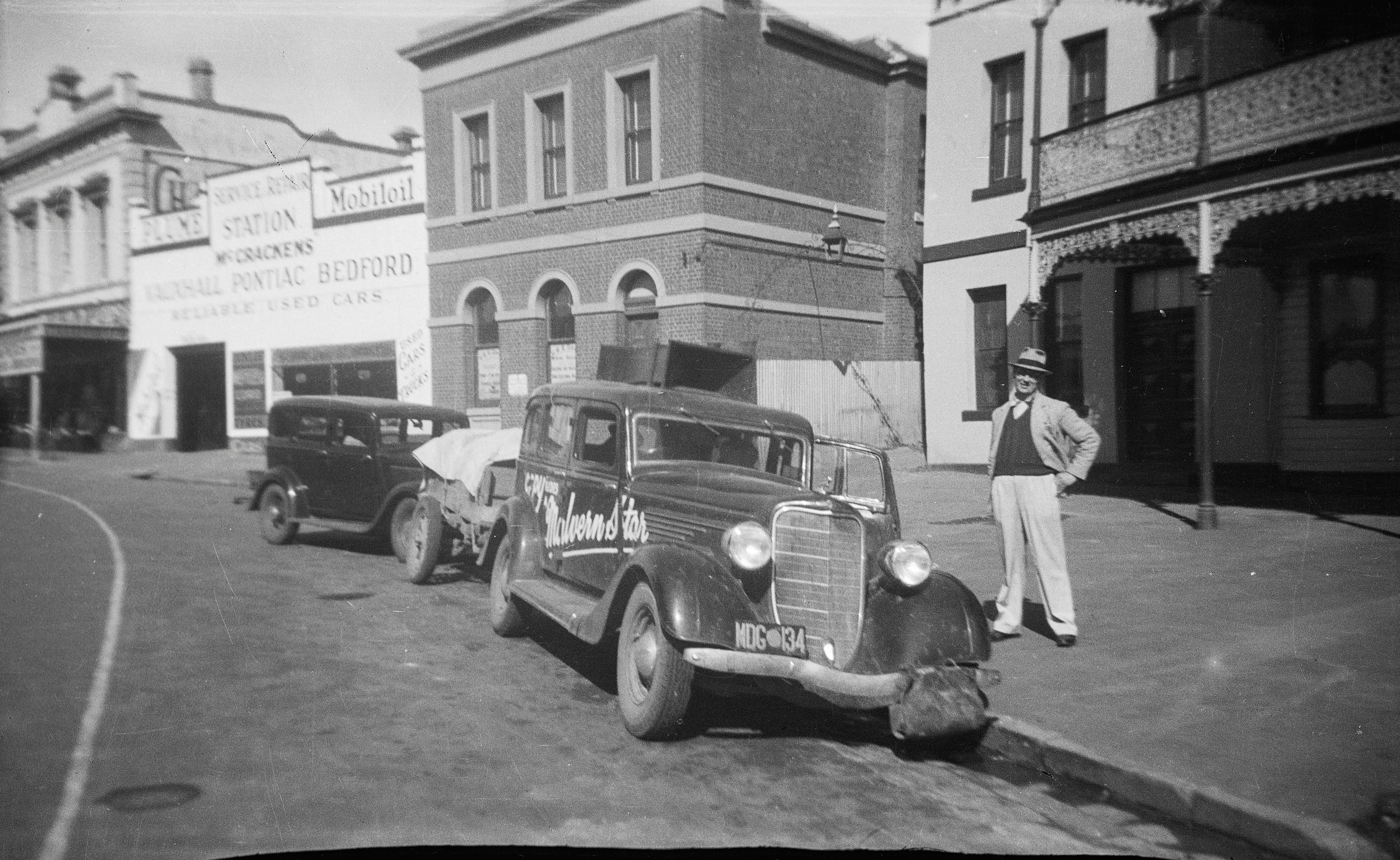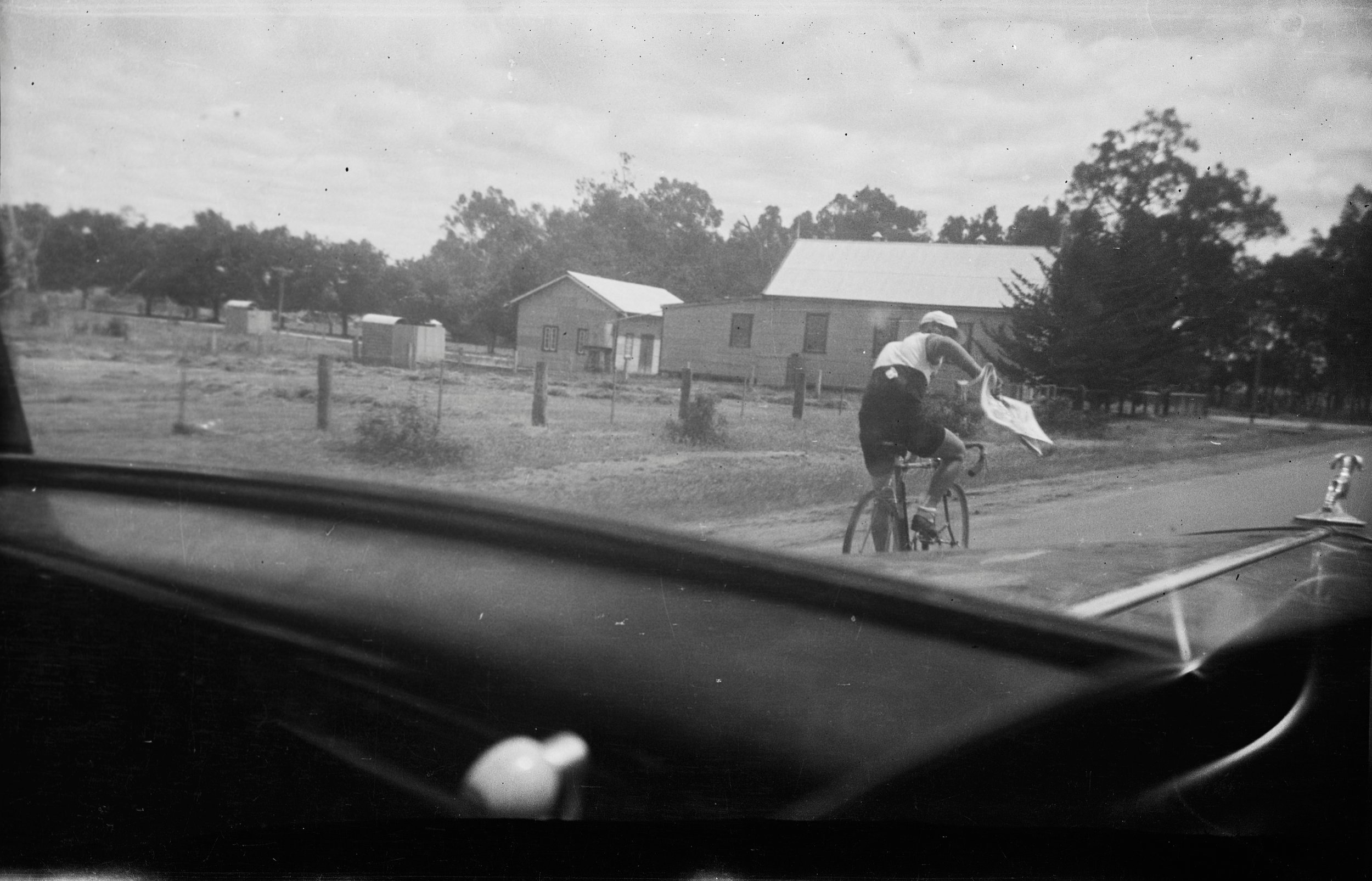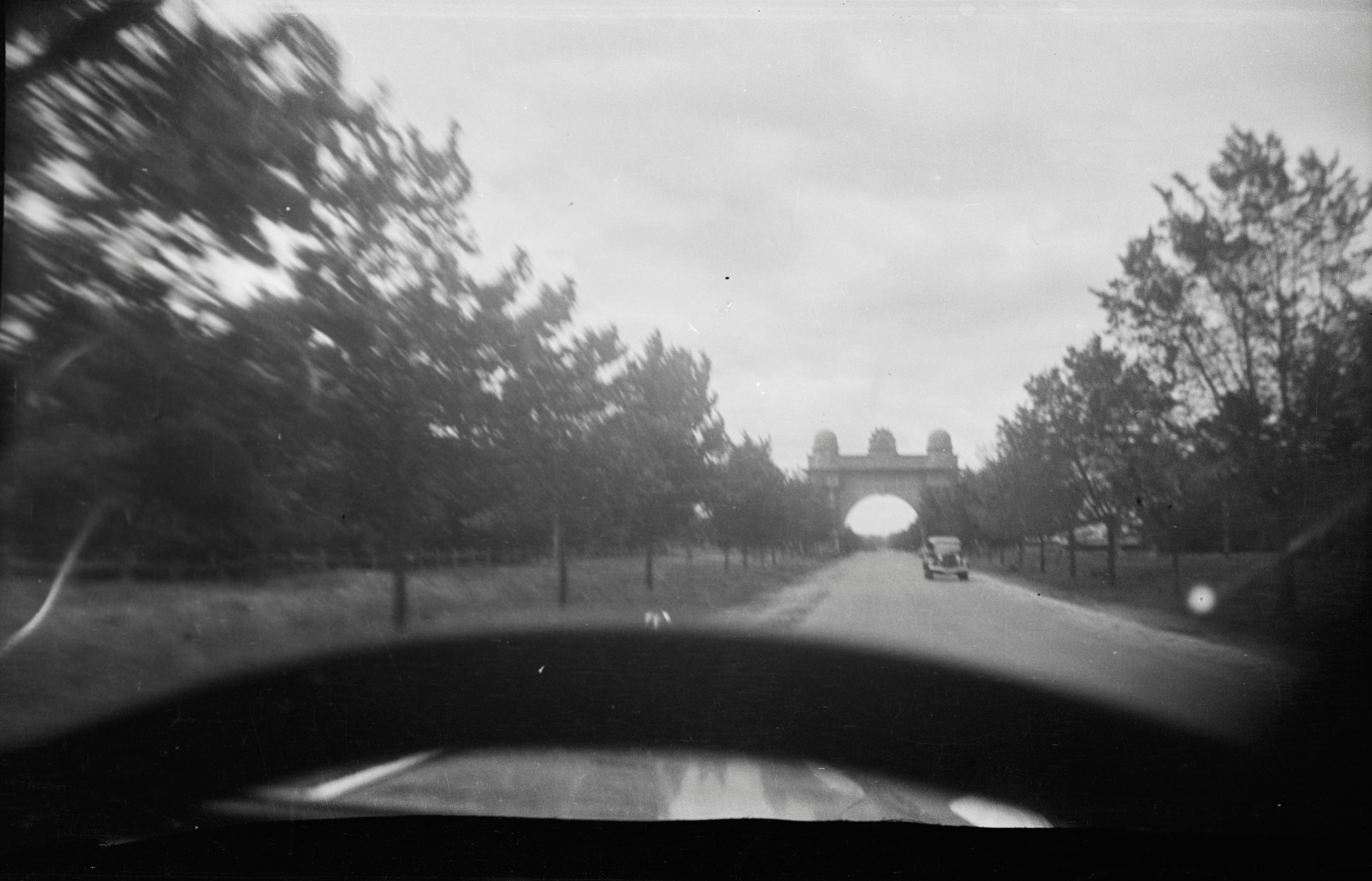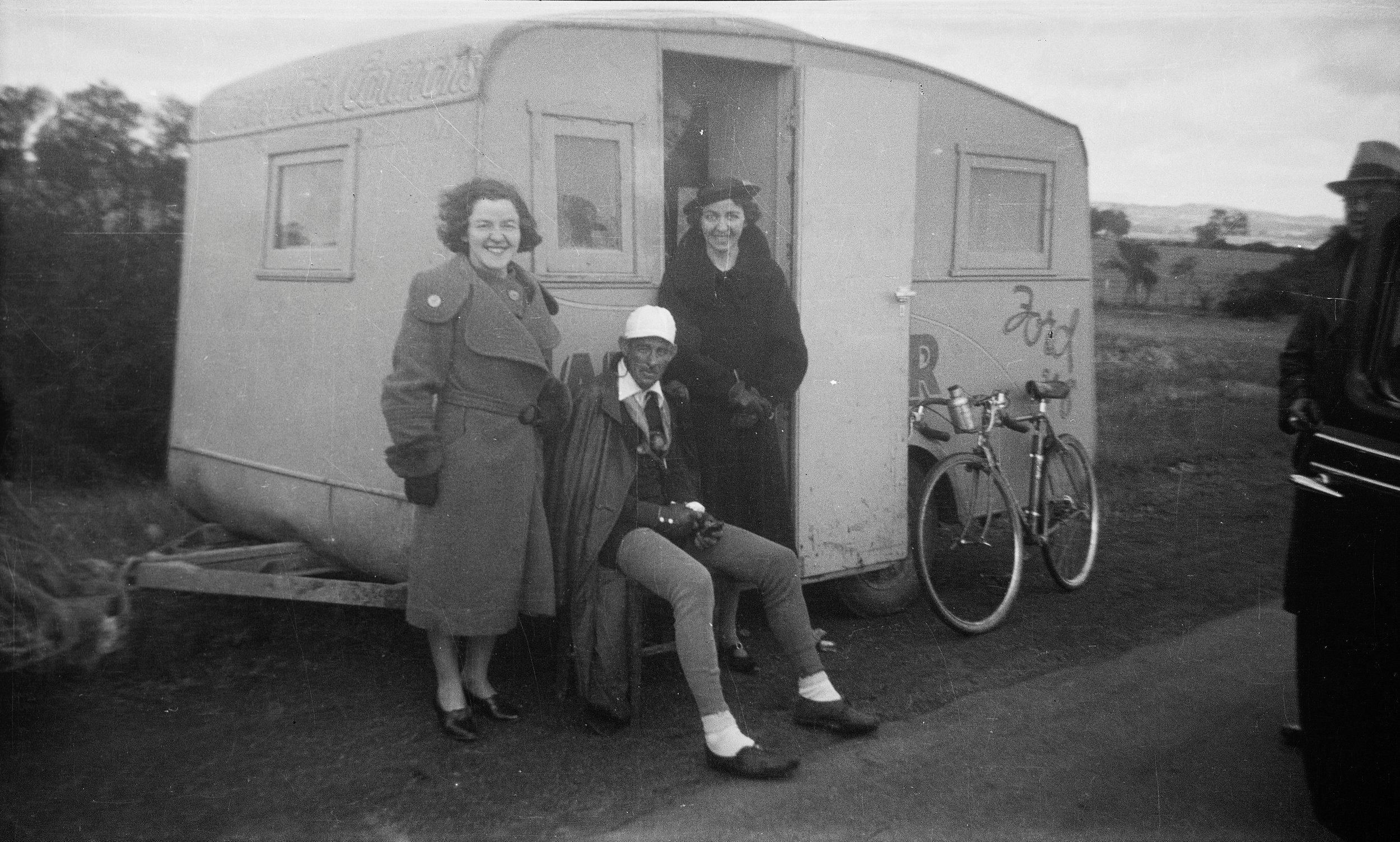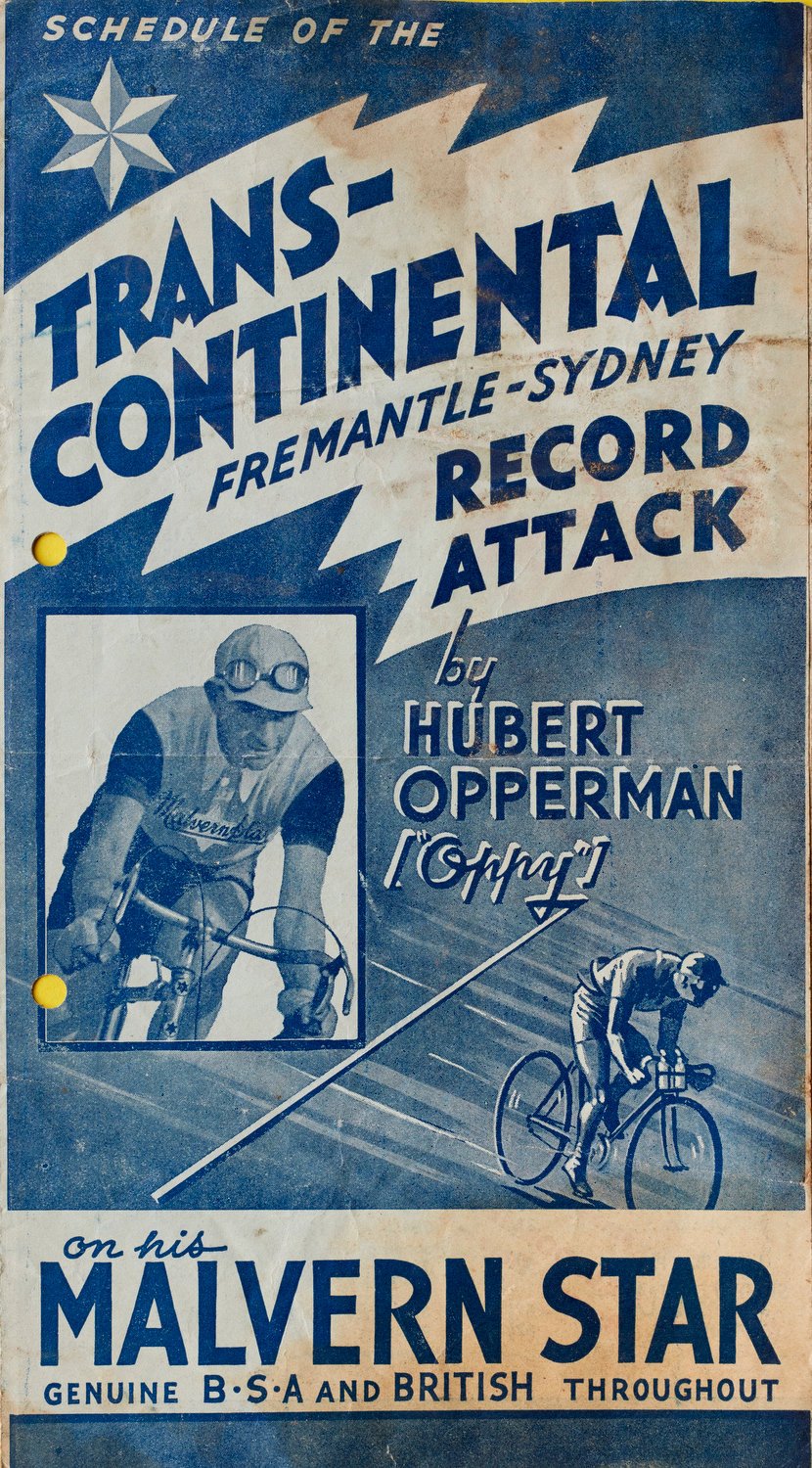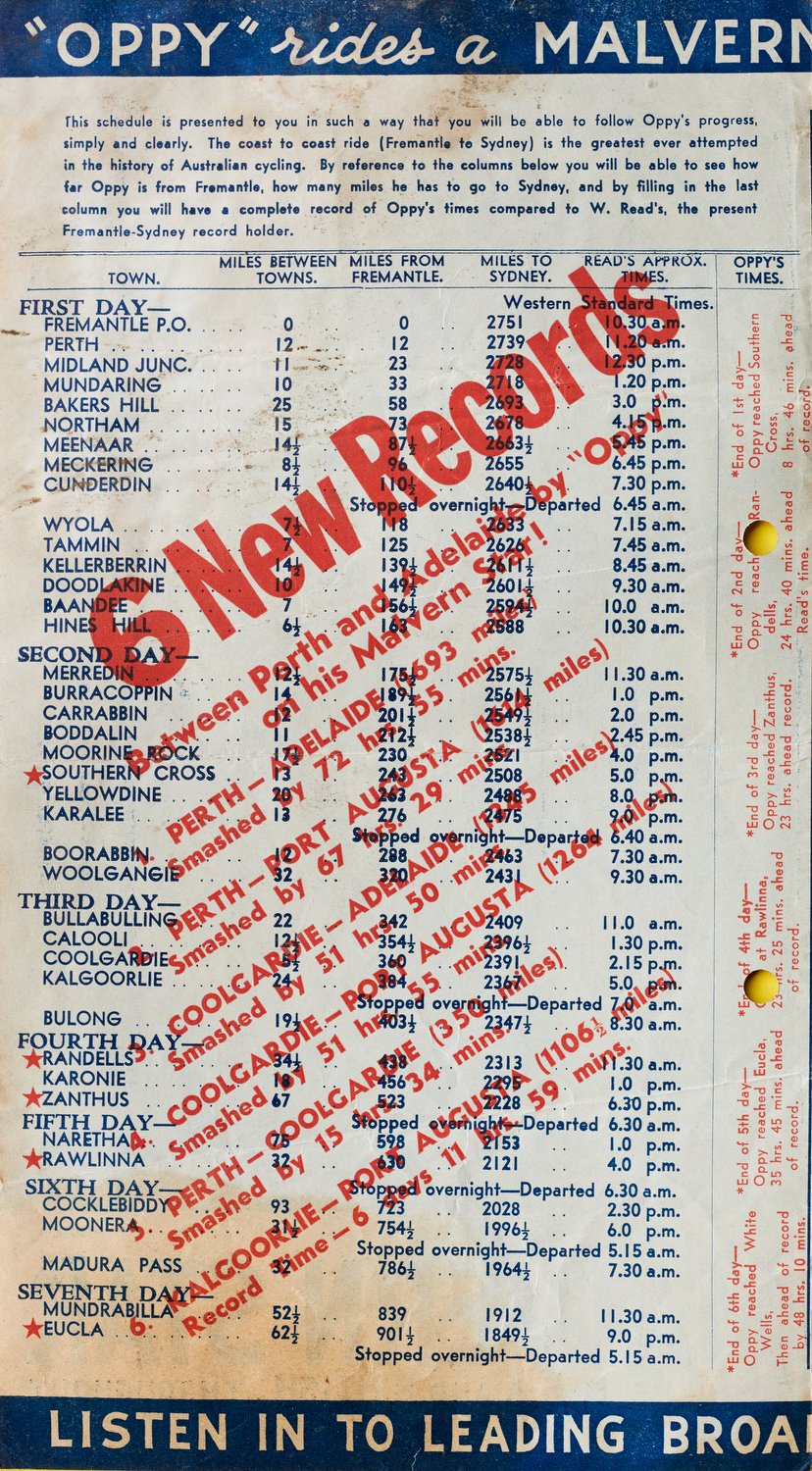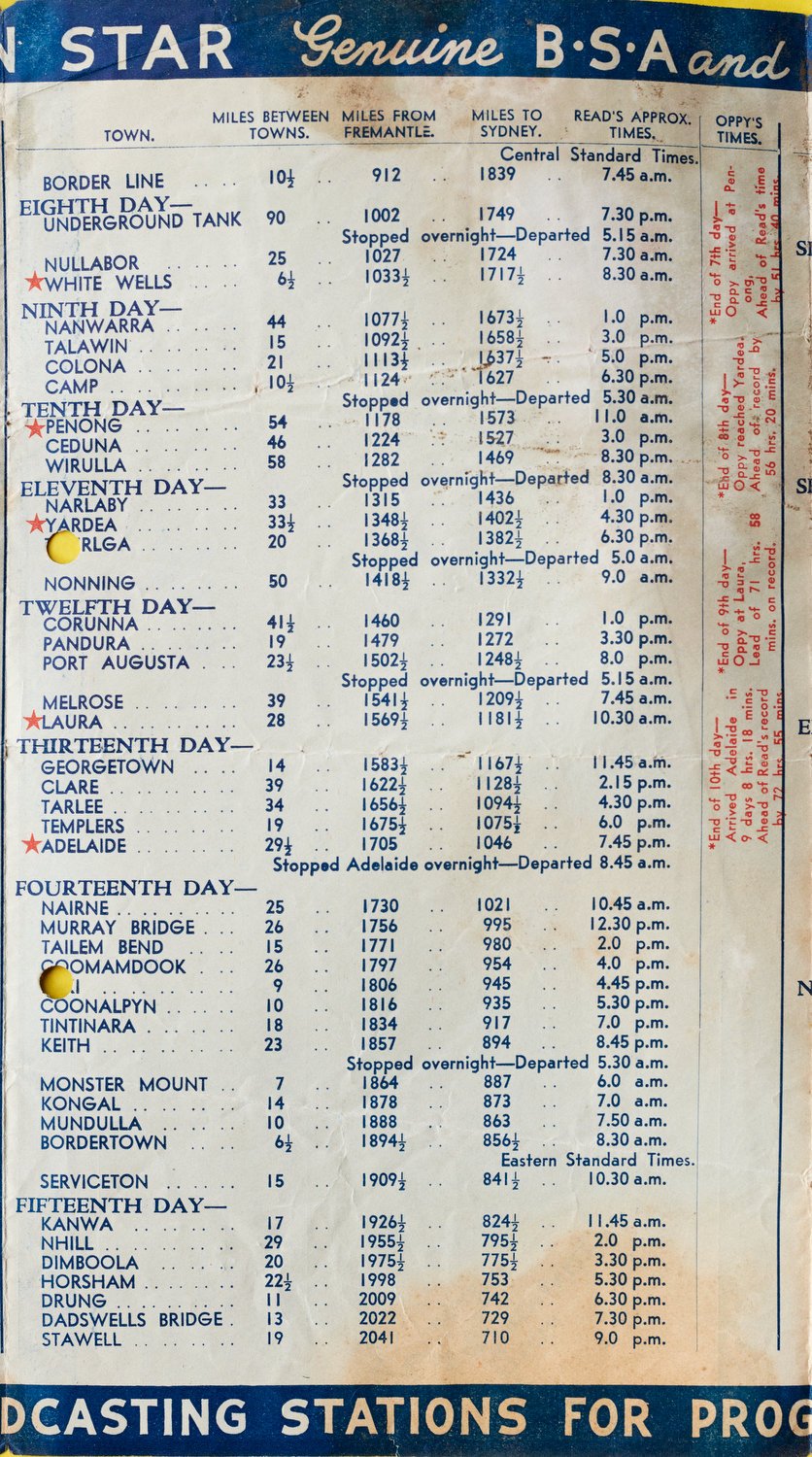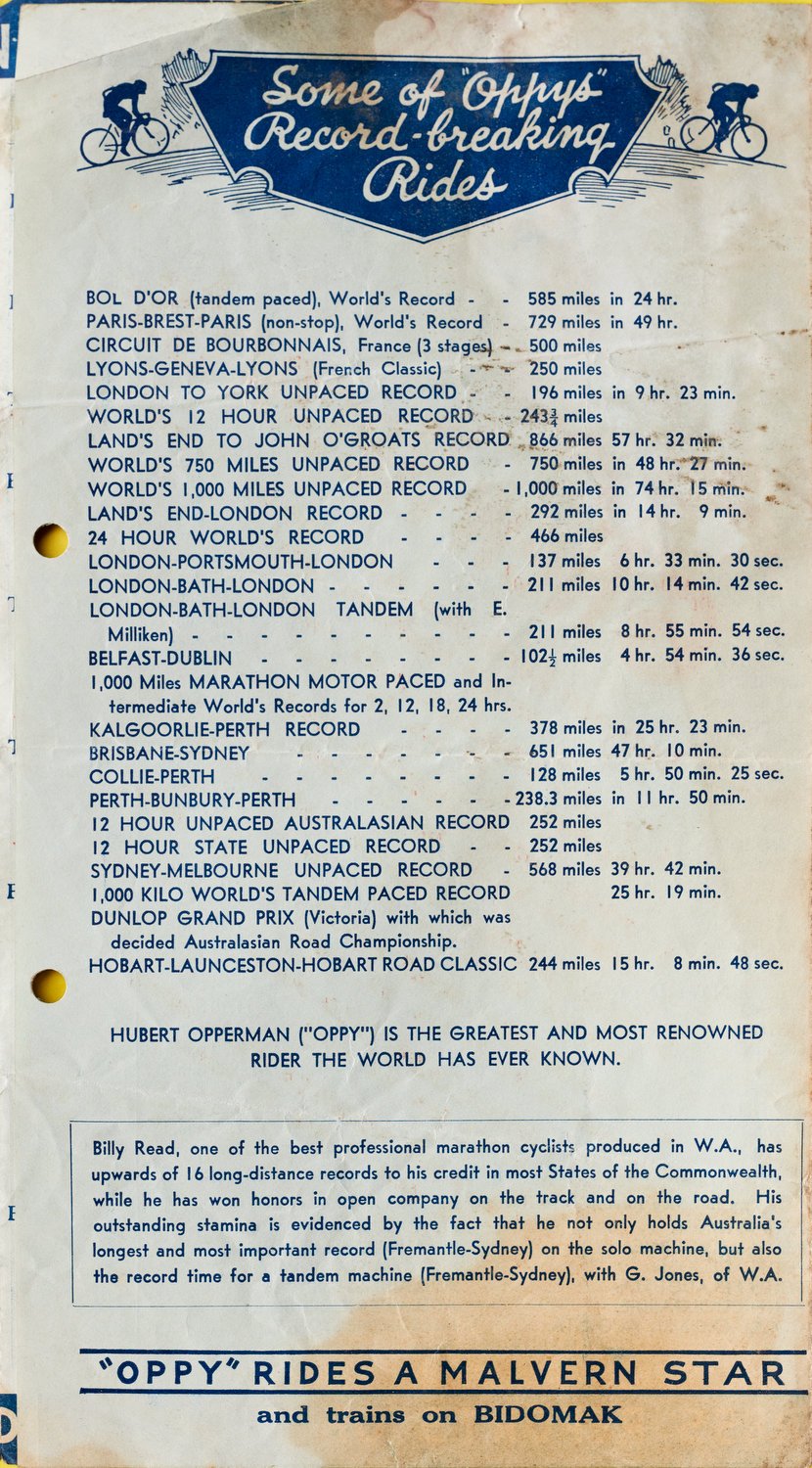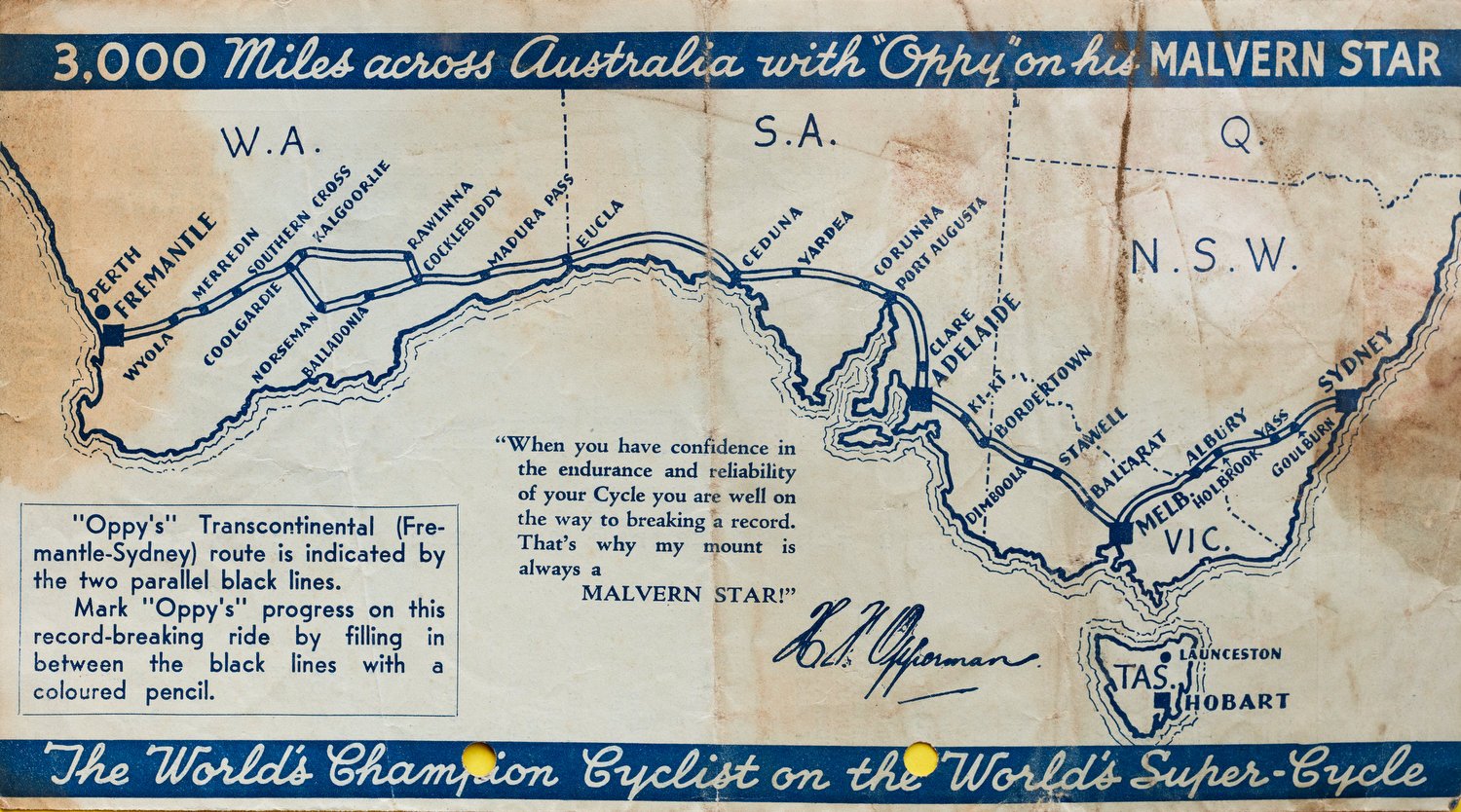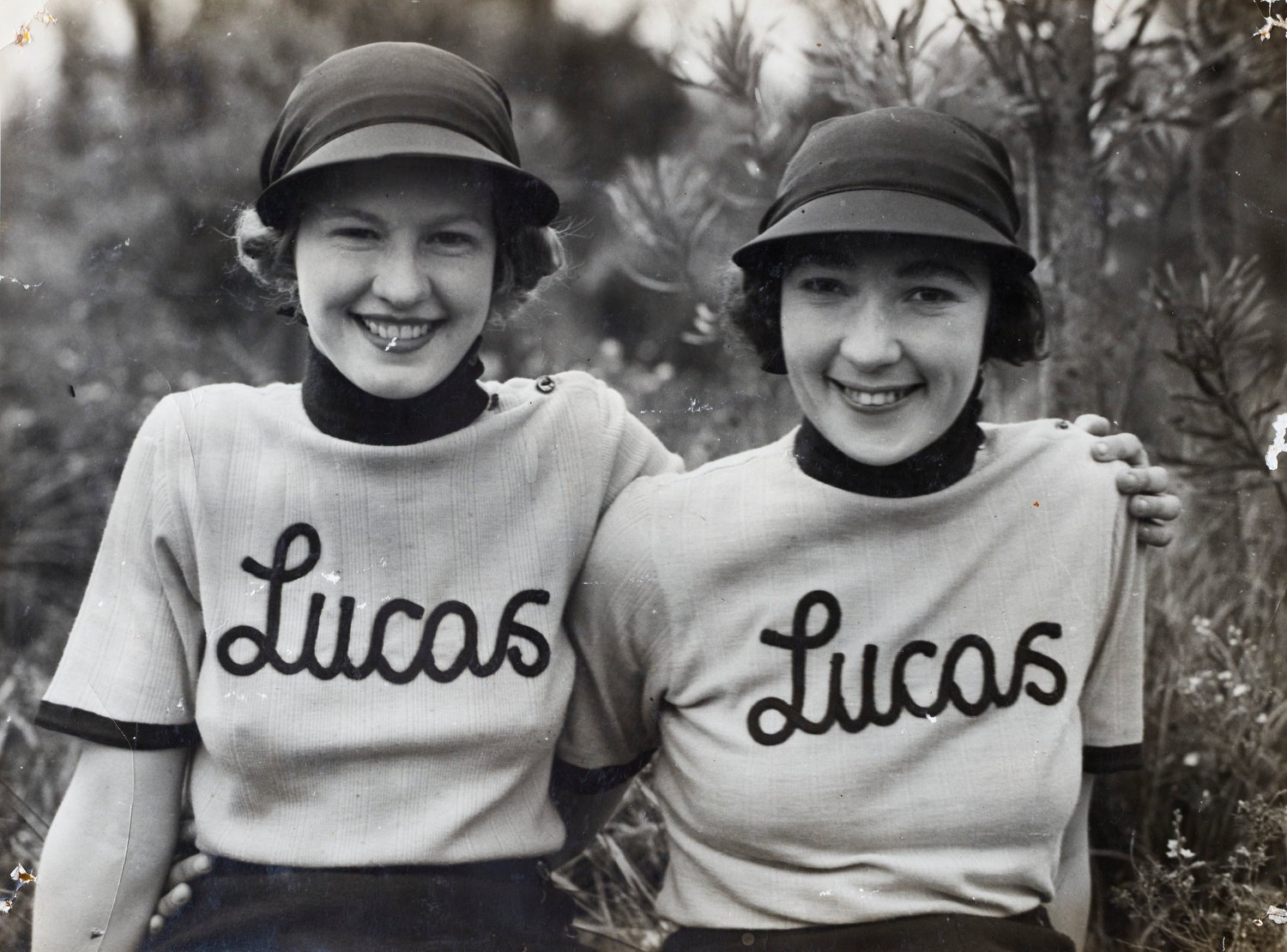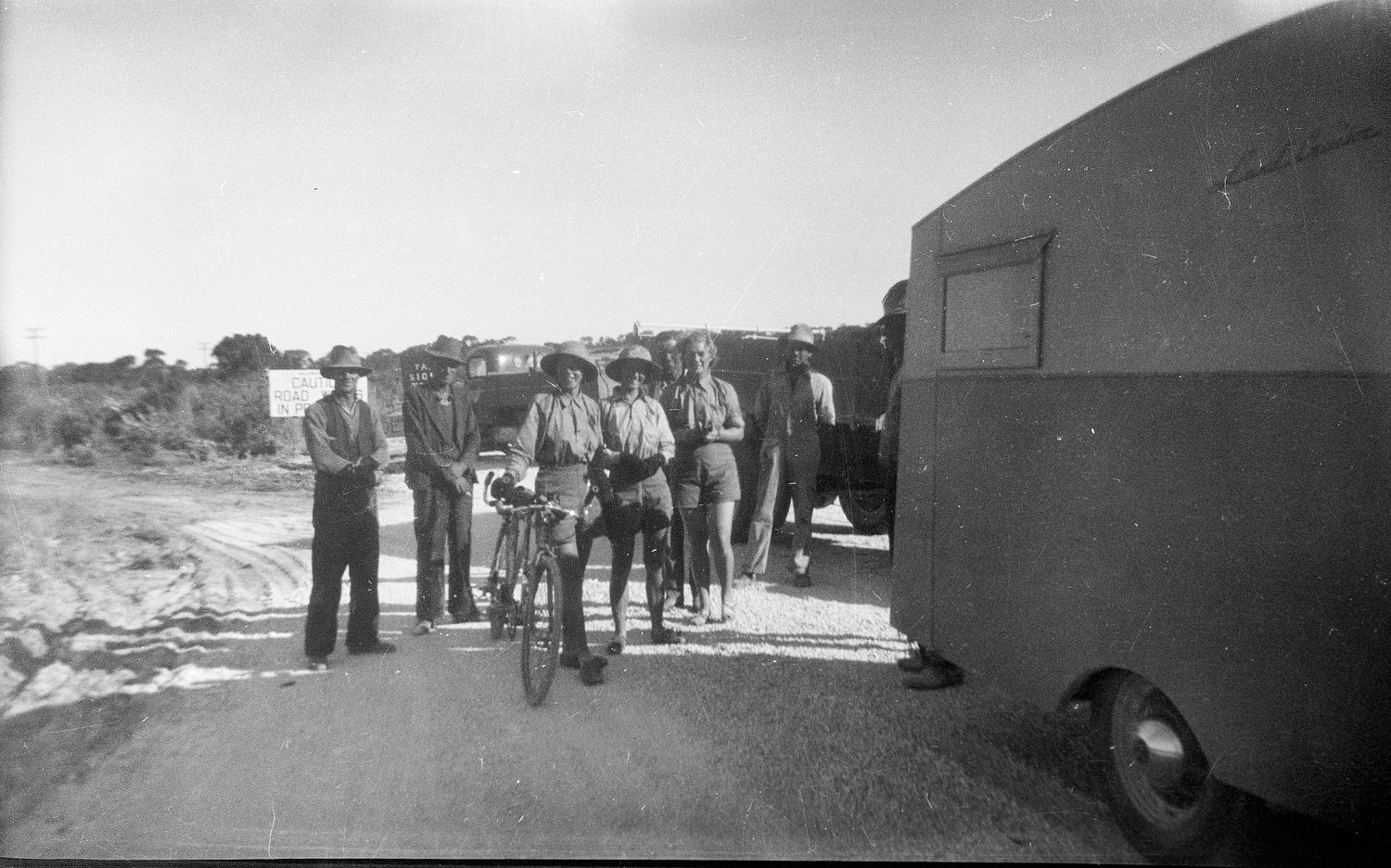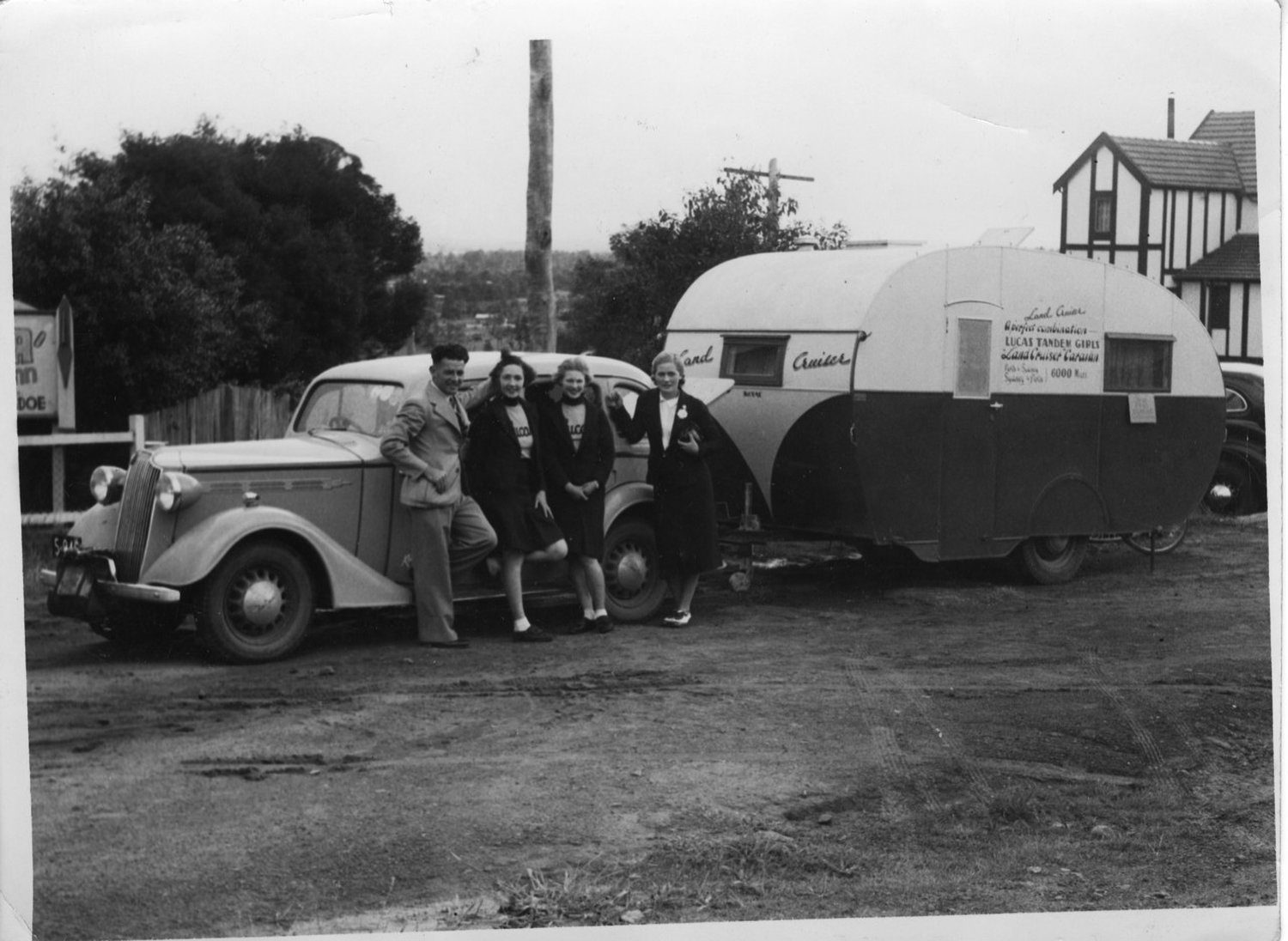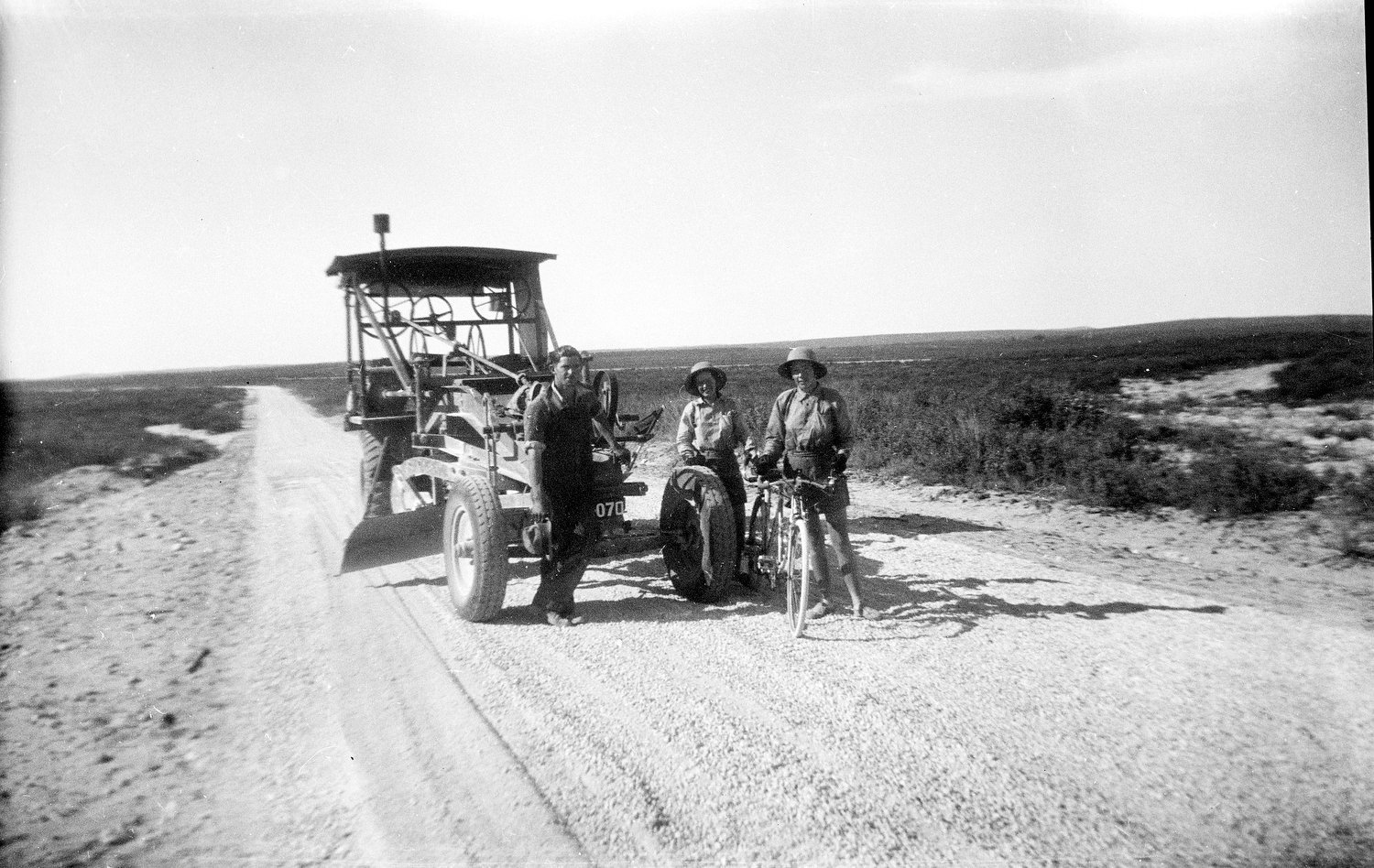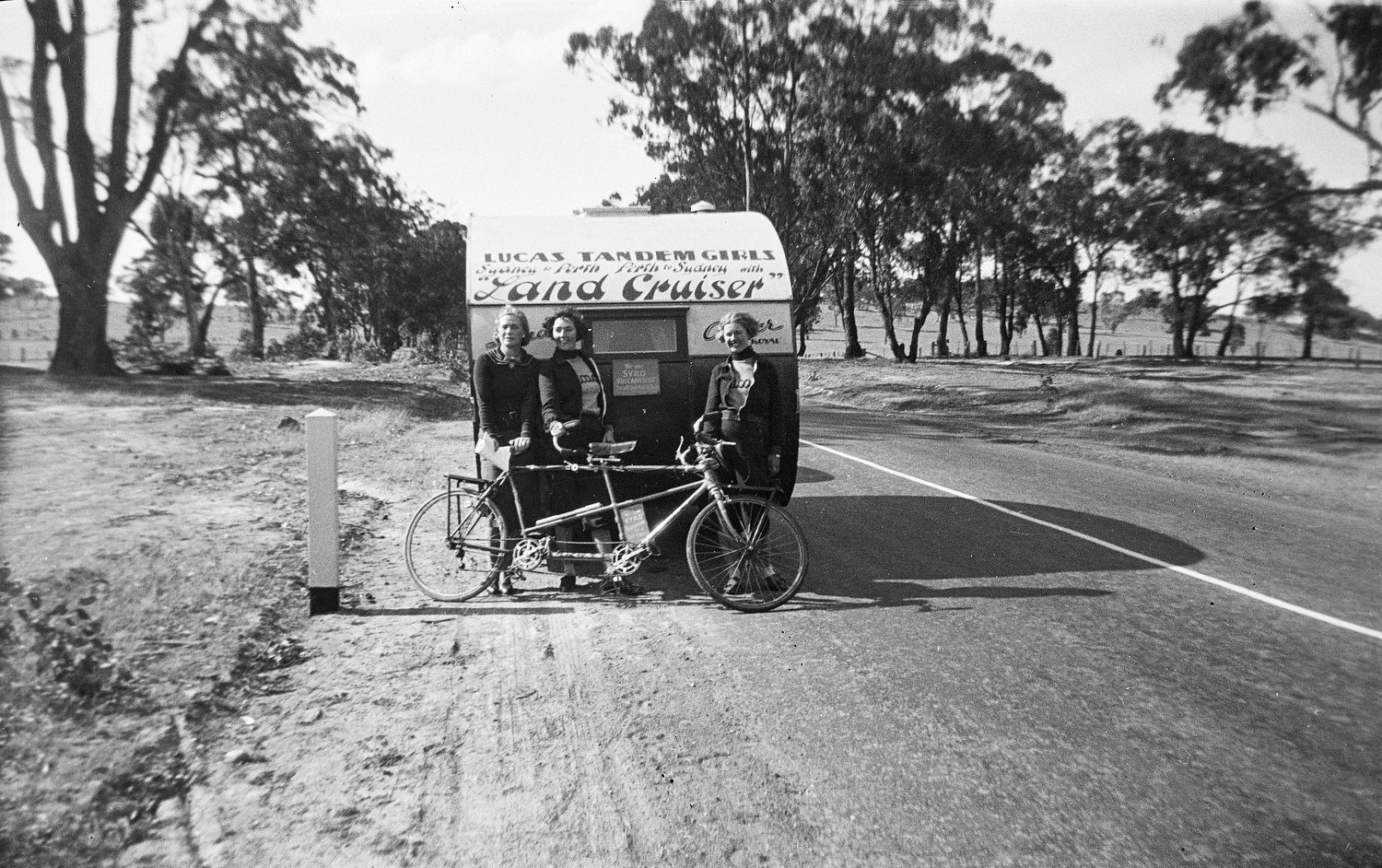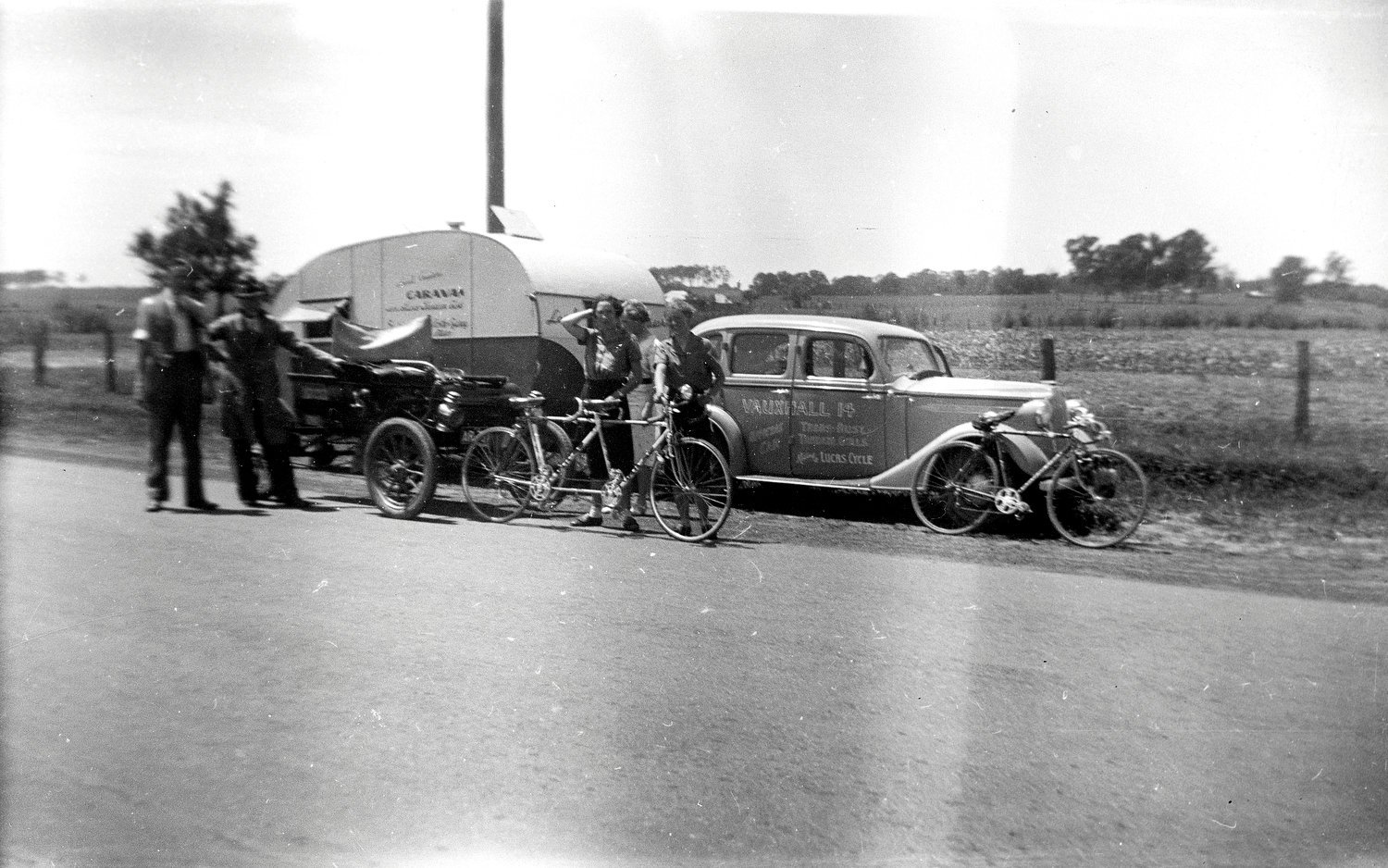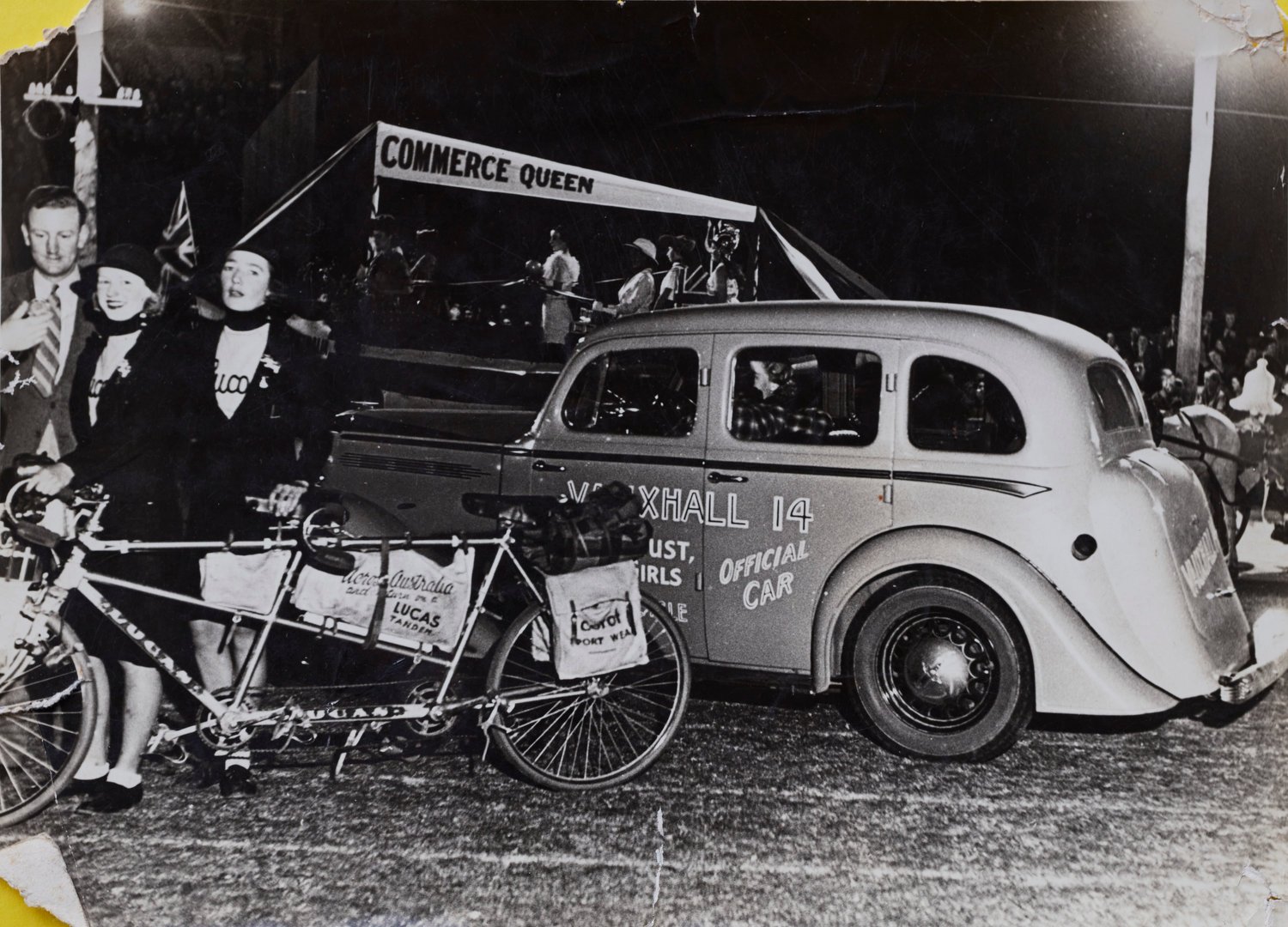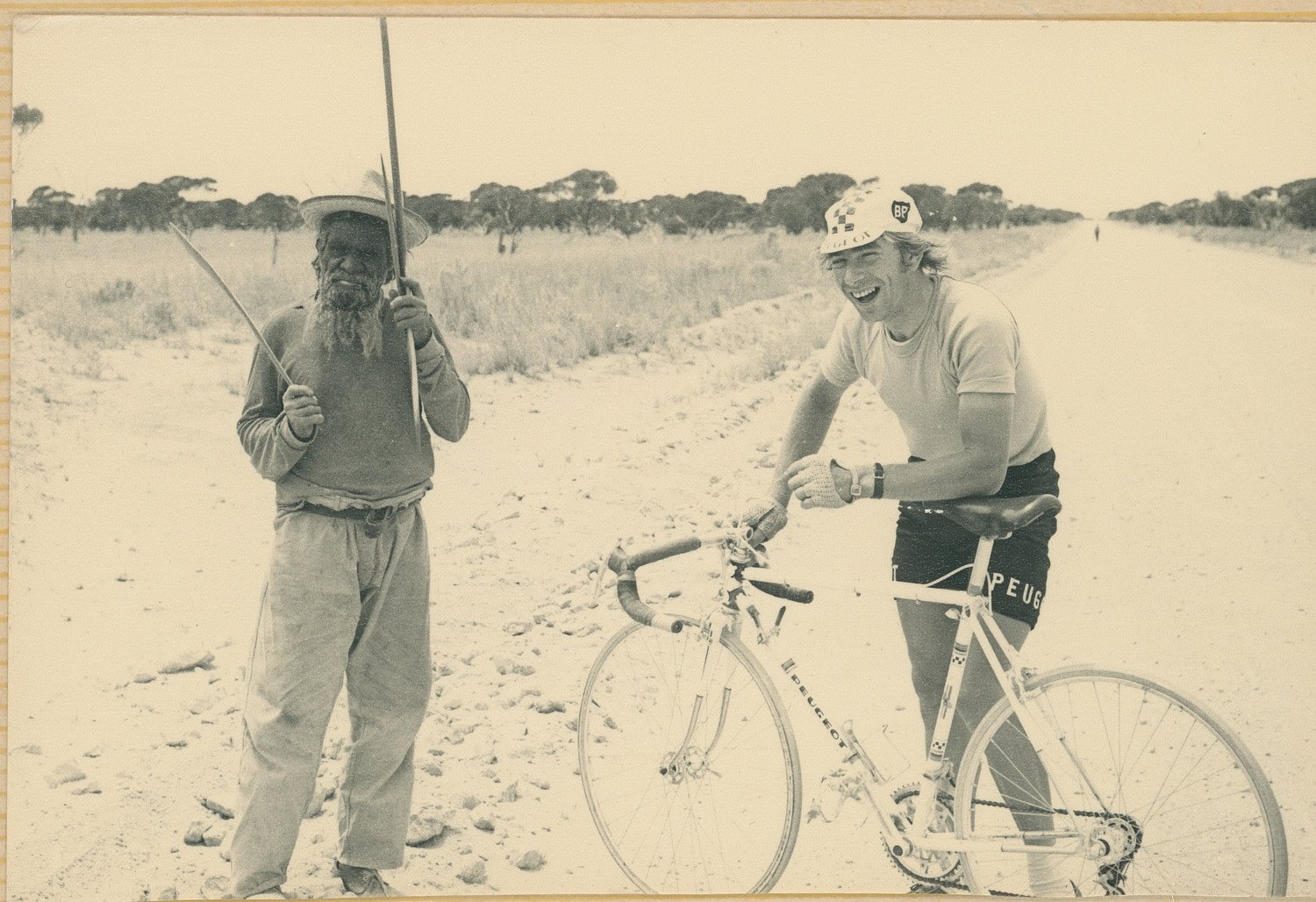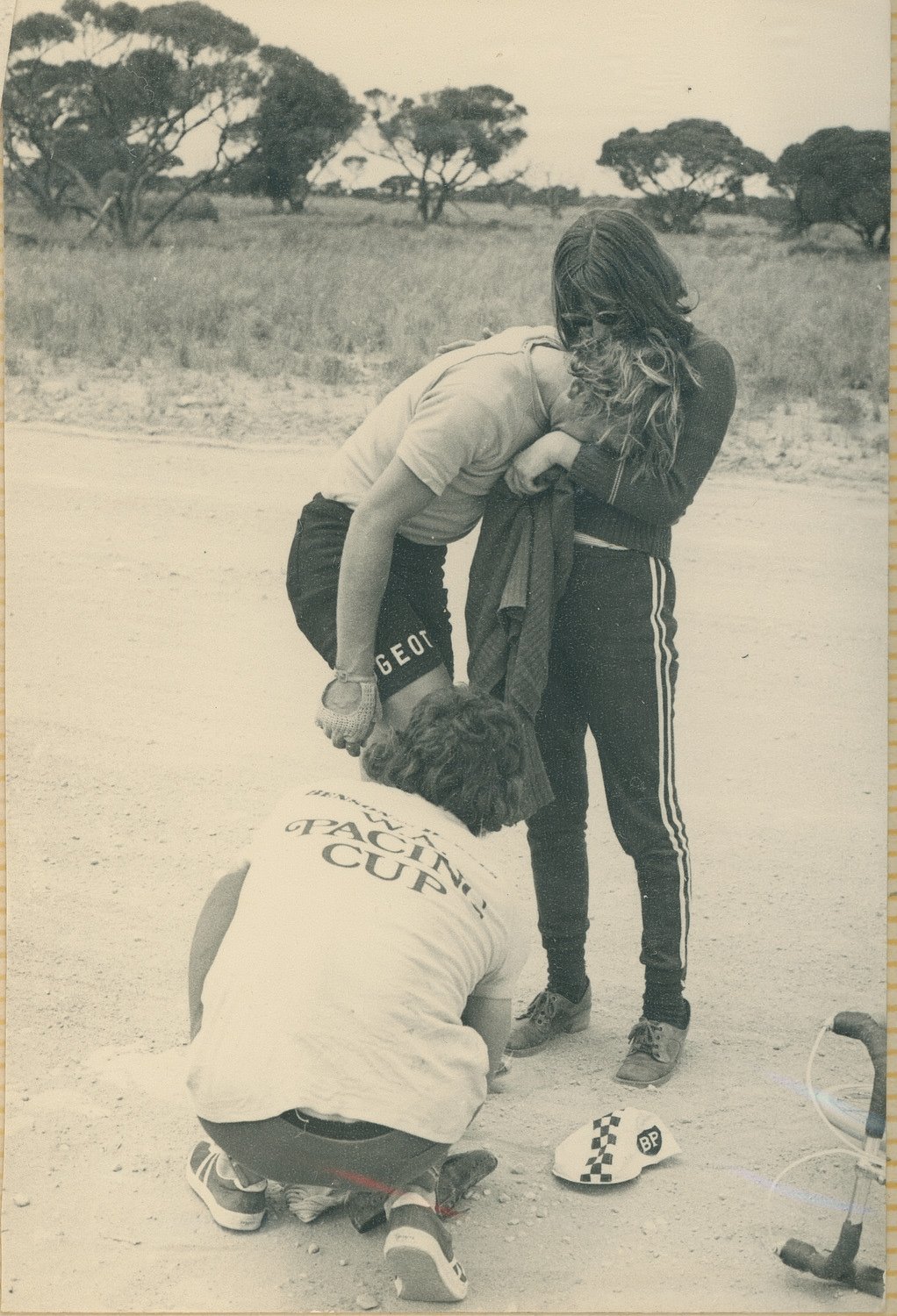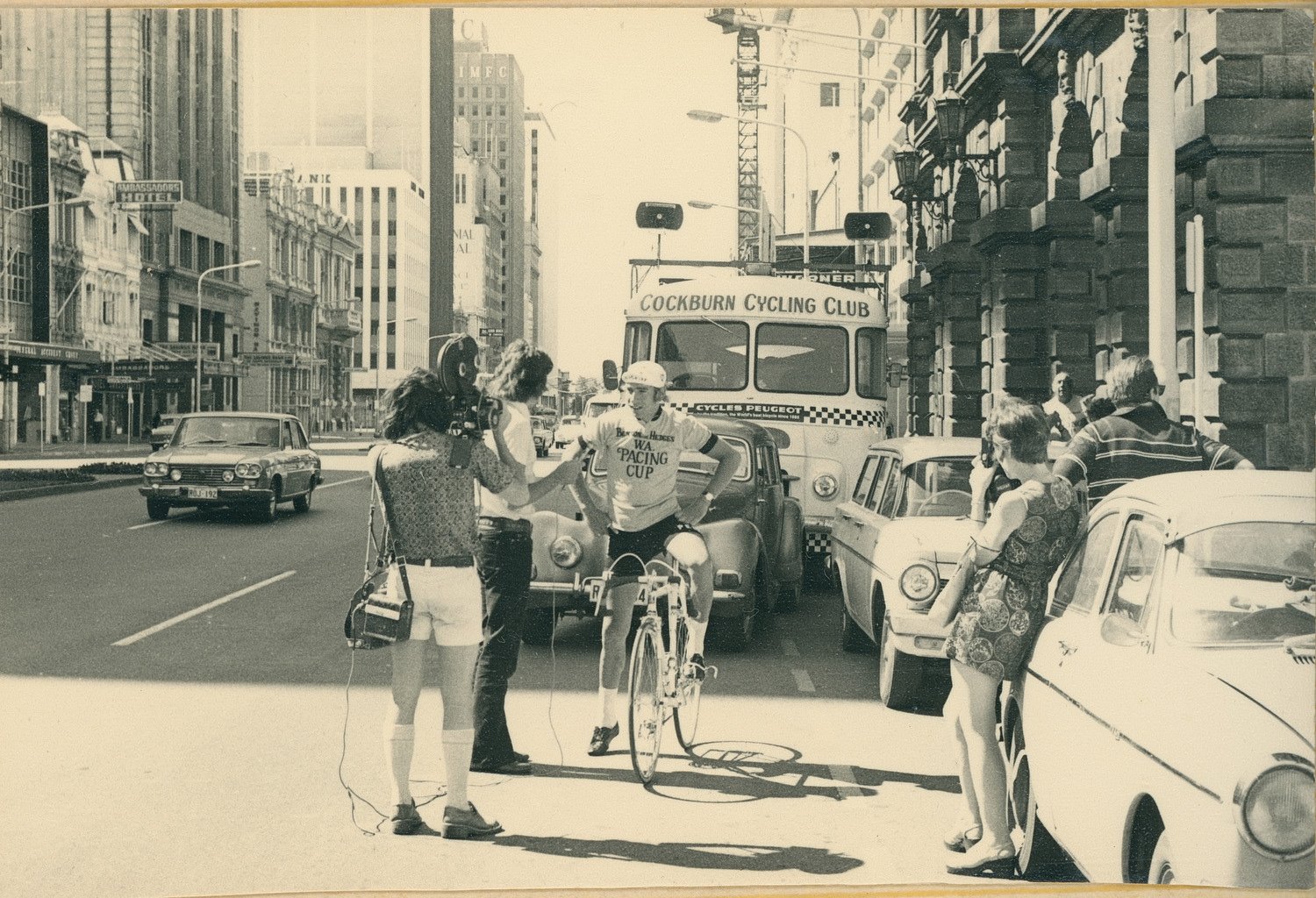Diary of a Ride
Of J.H. Wright From Fremantle to Adelaide 28.3.1898
March 28th 1898
Leaving Fremantle on Monday March 28th at 9.3 am we journeyed to Perth accompanied by Messrs Cooper and Rhodes on a tandem, Messrs Stotter & Jardine. We were met near Perth by Mr Rosling & F.A. White. We arrived at Perth G.P.O. 9.54 ½ am. Got a few things in Perth that were necessary, we then left Perth at 10:30am accompanied by a crowd of cyclists including Messsrs Armstrong, Rosling (2), Coulter, Bishop, Burville, Stotter, Thompson, E. Brown, White. We were met by the Swan Cycling Club who entertained us at the Freemasons Hotel Mid. Junction & gave us a very hearty send off.
Here we lost the company of a great number of our companions but we had the pleasure of Messrs Brown, Thompson & Stotter to Sawyers Valley.
Between Mid. Junction & Sawyers I had a very bad time (I was in such a hurry to get things ready before I left Fremantle that I did not enjoy my breakfast.) This I put down to the cause of it. Never the less when we arrived at Sawyers Valley we nearly ate the proprietor of the Hotel out of house and home.
To this point we had averaged 7 miles per hour. From the Valley we made up a bit of time, but the roads were something terrible & we had to walk about 5 miles as the road had been cut up for the jinker log haulers. (I think it would do the Chairman of the Roads Board good if he would take a trip down the road & see the trees that have been felled across the road.) We struck some really good roads then for 20 miles, to Northam.
Here we got our sheet signed at 7:40pm but I may say that we had to walk through Northam to the P.O. as the Town Ranger pulled us up as we entered the town (No lamps).
We went to Mrs Woods where we stayed for the night. We were accompanied to here by Mr Stotter.
Mileage for the day 74 ¼ mile.
Tuesday March 29th 1898
Leaving Northam at 7:40 am after having a good breakfast at host Woods. We journeyed along the York Road for about 16 miles where we turned off on to the Goldfields Road, which we found very fair for about 7 miles. We here left the telegraph line & had fair roads for about 5 miles, but the remaining 3 miles we had to walk as the sand was something awful. In this last 3 miles we struck 2 patches of about 100 yds apiece just like a racing track but it was too good to last. We reached Badgi at 12.30pm where we stopped & had dinner at a Mrs Taylor’s (by the way this lady must have known that cyclists are a hungry lot, for the meal was about enough for six. But still it disappeared & and after that lot, when we asked the price she wanted to know if 1/6 apiece would be too much.
Leaving this place at 1.40pm we rode on for a few miles & put a drop of water in the tanks. We then struck out for a place 20 miles from Badgi. We here bought some bread & took some water with us so that we could have something to eat on our going in to camp.
We tried to make Tammin Well, 13 miles distant, but darkness came on & we camped. There was such cold wind blowing that we got up and walked a few miles & then got into some scrub where we put in the remainder of the night, or morning.
Total 70 miles.
Wednesday Mar. 30th 1898
Getting an early start we pulled up at a house at the corner of the road but as it was so early we could not get anything to eat so we pushed along for about 19 miles. On this stretch we had to walk about 5 miles the road being so sandy.
The next place we came to was Morranoppin where we stopped for breakfast, Leake homestead (we did good justice to it.) We then pushed on to Hines Hill, a distance of 19 miles.
As it was still early we decided to go on to camp if necessary. We rode for a further distance of 22 miles then camped.
Days Mileage 60
Thursday Mar. 31st 1898
Getting an early start we made for a railway siding & after riding for about 4 miles along the railway line we came to Burracoppin. We here asked if we could get some breakfast but as they had run out of bread they advised us to make for Parks Road as it was only 6 miles, but as it turned out afterwards to be 24 miles (any excuse is better than none I expect we thought get rid of us.) But in making for the line we met some fellows & they directed us to Carrabin where Mr Hare, the telephone transmitter gave us a tin of meat and we made our breakfast out of that. We then plugged on to Noongar where Mr Kingston did what he could for us. He got us a place where we could get a dinner, at a Mrs Quinlan’s where this good lady must have known we were hungry for the meal she put down in front of us showed she had met hungry people. After leaving Noongar we made for the Cross 23 miles distant which we made in very fair time.
Arriving at the Cross at 5:30pm we stopped here for the night.
We here met Messrs Angelo & Hook. They gave us all the information they could which was very welcome.
The roads between here and Burracoppin were very heavy in places. We had to walk for miles.
We stayed at Southern Cross Hotel belonging to Mr Woods. 66 miles.
Friday April 1st 1898
After leaving the Cross at 7.10am we pushed on to try & make Boorabbin by 1pm. We did very well till we arrived at the edge of 18 mile sand plain. This plain took more out of us than we thought it would. The plain ended just before we got to Boorabin. On our arrival at Boorabin P. Office I found a telegram waiting me that I ought to have got at the Cross. It was from Mr E. Steele and Lorimer of Coolgardie wanting to know when we would be likely to reach Coolgardie so as they could come out & meet us. Answered this telegram also sent another to Mr F. Elliot.
We then went to the Boorabin Hotel which is about a mile from the P. Office. We here had dinner and then pushed on, but just before we got to Woolgangie a terrible gale started to blow so we pulled into Woolgangie. We made enquiries as to if we could get a bed at the Hotel but they had no room there for us, but Mr M. Grade of the Woolgangie who was on night duty at the time put the two of us into his bed & I tell you it was as good a sleep as ever I had.
Saturday April 2nd 1898
In the morning when we awoke he had breakfast awaiting us. Starting out after breakfast at 6.40am we left for Coolgardie. We pushed on till within 10 miles of Coolgardie. Here we were met by Messrs Lorimer & Steele on a tandem who took us along at a merry bat. About 6 miles from Coolgardie we were met by Mr W. Rogers.
We arrived at Coolgardie at 10.50am, about 12 hours ahead of time. Making a total of 387 miles from Fremantle to Coolgardie.
Leaving Coolgardie again at 4.15pm paced by Mr A Richardson I set out for Widgiemooltha, a distance of 50 miles.
The roads were very good.
We reached Horse Rocks Hotel, 21 miles from Coolgardie in 1 3/4 hours. It was getting dark as we got there so we stopped for tea & then went on our way again.
About 9 miles from Horse Rocks there is a hill called Gentle Annie & another called Gentle Annie’s Sister. They are real snorters, just like going down a flight of stairs.
The next place we came to of any note was Lake Lefroy, a dry salt lake with a splendid surface but the wind blows across it something terrible, at any rate we reached Widgiemooltha that night which was not a bad performance considering we stopped at Coolgardie about 6 hours. I might say that on our arrival at Coolgardie there was a telegram awaiting Mr Denning recalling him to Perth. Why he was recalled I could not say. Mileage 438. Stopped at Lefroy Hotel which is a great place.
Sunday April 3rd 1898
Arthur Richardson left Widgiemooltha about 10am. I stopped till 1.30 & wrote letters & had dinner, then set out for Binjeringa 35 miles. I reached 5 Mile Rocks & camped there in an old camp.
Monday April 4th 1898
In the morning I set out for Binjeringa which I reached in good time. Here I had breakfast at one of the soaks meeting a prospector who put me on to Frazer’s track. There was nothing of any great note on this track, all I had to do was to follow the tracks of a buggy & pair that had gone through to Ponton’s by way of Dempster’s.
This station is very complicated to get into, you travel about 7 miles after going through the first gate, then you have to got through goodness knows how many more.
I was just going to give it up in despair & camp for the night when I saw horse come trotting out of a gully & then I thought I could smell smoke, so I kept going & was rewarded by the dogs tackling me which I did not think anything about as long as there was a sign of a doss & meal. The first thing one of the station hands dis was to deal me out of a great billy of tea, then after that was done I was taken up to the house & tea prepared for me again (Lambs Fry & Bacon.) It was alright, the people here cannot do enough for you, not like the people you meet about the towns.
Mileage up to date 548
Tuesday April 5th 1898
Being up early I started and straightened my crank which I bent the night before. By the time I got breakfast and got everything ready it was 10am before I got going on the track again. I did not feel very well as I had a very bad attack of dysentry but I reached Ponton’s early mostly on account of the good roads. I passed through Newman Rocks before I thought & did not stop to see if there was water there as I had any amount. The next place for water was the place where the teamster shot the Afghan but I did not stop there. I stopped about 45 or 60 minutes on the road altogether to boil my billy & then on again reaching Ponton’s at 6.25. Here I went direct to the Telegraph Station and sent wires to Perth & then went on to the Telegraph operators camp & passed a part of the night with them, then went back to Overseer’s place to bed.
Had a very bad night & in the morning did not feel fit for riding so I decided to spell a day & trust to pull it up again as I was a lump inside of schedule time.
I forgot to say that the overseers name was Mr Dunn & Mrs Dunn who did everything they could possibly think of in the morning.
I met Mr W. Ponton, son of the proprietor, who is as nice a person as you could wish to meet. By the way the work this man turned out - bicycle work - is wonderful. A little while ago broke some spokes & nipples, got wire for spokes & then got brass, melted it, put it into moulds, bored them out & tapped them & when they were finished there was not much difference between them and the other nipples. He also had the misfortune to break a fork side, so he set to work with an old barrel of a gun & made a job of it that I think would do justice to any repair shop in the colonies.
Thursday April 7th 1898
Leaving Ponton’s at 9.30 I started for the 90 mile tank. 40 miles from Ponton’s I came to what is called the 40 mile tank. I took some water aboard& set out again arriving at the 90 mile tank at 7.15pm, distance of 79 miles. Mileage up to date 705. Camped at the 90 mile. This tank (90 mile) is a cemented underground tank. The others are 400 gallon iron tanks. These tanks are very handy for camping as there is a great iron roof over them to act as a catchment.
While I was here it rained something terrible - good thing I reached here. There roads up to here were good but there was a good gale blowing.
Friday April 8th 1898
Morning dull & windy. Had breakfast, started for my day’s work. The roads put o the 40 mile tank on the 90 mile line were slightly hilly & stony.
I very nearly missed the 40 mile tank which is about 3/4 mile off the road & on the telegraph line. But on my regaining the road I went on a few miles & discovered the road tank. I came on to a camel team, just a bit ahead & as I was short of food I got some off the Afghan camel drivers. I pushed on again to the 70 mile mile tank & camped beyond there for the night.
Mileage 775
Saturday April 9th
Got a start at 7am with nothing but sand around me, up one hill & down the other side till I struck Graham’s 25 miles distant. After 9 hours hard walking I arrived at Grahams just about done. They had a good dinner waiting for meat they were expecting me. They could not do enough for me. I may mention here atet about a mile from the station, on the coast a cyclist, a Mr Saunders, had a very narrow escape from death 2 weeks ago. Travelling from Eucla direction he ran short of water & in making for the station he missed it & got down on the beach & was found there nearly mad drinking the salt water. He got alright again.
Stopped the night at Graham’s mileage 800
Sunday April 10th 1898
Got going 10am. Took 3 hours to get over 6 miles of sand across country. I started for Midura but easterly wind blew me to a standstill. On the plains I camped till the night & wind stopped then I did about 30 miles after the moon rose. Campled at Midura Station all night
Mileage 856
Monday April 11th 1898
I got on the wrong track this morning and travelled about 6 miles before I knew it. Was put on track by blackfellow. Still easterly wind blowing. I made Kennedy and McGill’s station & was done up. Stayed here for the night
Mileage 912
Tuesday April 12th 1898
Left station early & was taken bad with diarrhoea. Stoped at hut 11 miles from station. Felt better next morning & made for Eucla with west wind to blow me along. I took 7 hours to go 50 miles. Had dinner at Eucla. Left Eucla for Nullabor but had to put back again - too bad.
I was taken worse than I had been all along the road. I put this down to the water I got at the hut 11 miles from Kennedy’s it fairly hummed.
Mileage 973
Tuesday April 19th 1898
Left Eucla for Nullabor. The road here for the first 35 miles is sand & stumps but after passing the first tank (35miles) it improves. I did 74 miles that day & then camped. Mileage
Wednesday April 20th 1898
Made an early start for Nullabor which I at dinner time somewhat knocked up. The head wind took it all out of me. At Nullabor Mrs Creigh took me in hand. I stopped here 3 days. During my stay here I spent a very pleasant time.
Saturday April 23rd 1898
Left Nullabor accompanied by Mr Creigh who is ardent cyclist. I had his company as far as the White Well 6 miles from Station. I journeyed on to the Bight, 18 miles from this to Nanwarra, 30 miles is something similar to Eyre’s Patch (I misunderstood Mr Creigh & got on wrong track - followed the telegraph line instead of the mail track.)
The next place after leaving the Bight, of any consequence is the tank 8 miles from Bight. The the next place is the second tank 23 miles from Bight. It was here that I made the mistake. Instead of taking the mail track I followed the telegraph line for 8 miles before I found out I was wrong. Camped for the night.
Sunday April 24th 1898
Started back again for tank Dicks Plains. Here I got on the proper tracks, reaching Nanwarra Station at midday. By making the mistake I covered 16 miles too much. Mileage to here 1169.
While at Kennedy & McGill’s station I read an account of the trip of Messrs Bayles & Eagal. In this they stated that they had been treated rather badly by the Manager of Nanwarra Station. Where the got the course to complain I do not know & I don’t think anyone else does either. Making statements such as they made is likely to make it bad for any other cyclist who may be be passing here. From my experience I think that Mr Gleeson is not one of those men at all. They complained that they had to sleep on the floor of the hut.
It is a pity they ever left their mothers’ apron strings. Stayed at Nanwarra over night.
The road to here is very sandy & has to be walked. From the tank you get rideable track for about 6 miles then the remaining 8 miles to Colona is off & on. Stopped at Colona & had dinner.
Colona is a deserted station. They had to leave on account of the drought which has been very bad for 4 years. After dinner I left for Corringitie but after going 14 miles came to a Mr Weir’s place. He told me there was no-one at Corringitie so I stopped there. For the night.
Mileage 1217
Wednesday April 27th 1898
Left the Weir’s place, passed Corringitie (4 miles). There are huts all around here but very few inhabitants. I saw a man in the distance, driving a team. Passed Corringitie & crossed telegraph line twice & and then took the left hand track. About 3 miles along here I came to Pentumba, another old deserted station. There is a man camped here though just to look after the windmill. I stopped and had some tucker with him then left Yallata Flats where there are a few farmers. I got off the track here & went to a farm where I had a cup of tea & feed. Was directed to right track.
Distance to here about 6 miles. After leaving Yallata I passed a few farms before I came to Bookerby. It is all very fair riding to here & a few miles of walking. I here had tea with Mr Meldrum a missionary stationed here. After leaving Bockerby I had 12 miles of good riding & then the remaining 8 miles all walking. I reached Penong Station which is suffering through the drought. At shearing time last years they had 11,000 sheep & now they only have 1,000. Wild dogs and drought playing havoc with them.
On my arrival at Penong Station Mrs Murray prepared tea for me as it was long after tea time. When one is travelling like this he can do a feed every hour. Mileage to here 1276
Thursday April 28th 1898
Left Penong accompanied by Mr A. Murray who is an ardent cyclist. I had his company for about 25 miles. He showed me the best road so I profited by his being with me. Took the mail route from Penong. 15 ½ miles from there took north east track, passed Drummett’s woolshed 22 ½ miles from Penong. Mr Murray to Mr A. Pains for dinner. After leaving here struck telegraph line after about 2 miles, followed line for a mile and came to Mr Smith’s far, had another lunch & left for Denial Bay (McKenzie). I just stopped here and then pushed on for tanks at Murat Bay 10 miles further on (McKenzie). Here I met an Afghan who directed me to Mr Tourney’s farm where I had tea & stopped for the night. Any amount of tanks between Penong and here. Mileage 1331.
Friday 29th April
Left Mr Tourney’s farm & called in at another farm 4 miles away. This man has been overland so I went to him for some hints. Rode along the Meghiny 12 miles from Murat Bay Tanks. Called in at another farm as this was the last I would see for 100 odd miles & thought it best to get food on board. Pushed on to Wandna (12 miles from Meghiny) got water here and set going again. Came across bike tracks & decided to follow them as they seemed to go the way I wanted. Came to Govt. Tank about 12 or 14 miles. No water in it. Camped at woolshed about ½ mile from there. Wild dogs kicked up a terrible row. Woolshed was at Nungikompita.
Saturday 30th April 1898
Left Nungikompita shed at 7.30am & pushed on. Goodness knows where I was going, I did not. Was just going to turn back when I noticed a hut in the distance. Found water there, boiled billy & had some scran. A young chap came along on horseback. He belonged to a wild dog party.
He told me it was Puria hut and advised me to wait until his father came along as he knew the country all around. The father on returning, was so busy that he could hardly spare a moment, but he gave me a very pressing invitation to stay with him till he could have more time to himself. As I was in no hurry I decided to stop. Borrowed a gun from him and went out after rabbits, but they were a bit too smart for me. The blacks of the camp got some & I had the pleasure of tasting some of their cooking. They bake the rabbits in the ashes with fur on everything. When cooked they skin them. They were very tasty. Stopped all day Sunday.
Monday 2nd May 1898
Left Puria Hut at 8.30 am. I did not got to Wlula Rocks, took shortcut to First tanks, distance 19 miles. Crossed the telegraph line 15 miles from Puria Hut then dodged in and out of it the next 4 miles. To Yartoo
1st tank from Puria 19 miles
2nd tank from 1st tank 7 ½ miles
3rd tank from 2nd tank 15 miles
Ponky Dam from last tank 7 ½ miles
Ponky Dam from Yardoo about 16 miles
From the first tank to the third tank nearly all sand. Had to walk a great part of it. Road through ranges water washed. Arrived Yartoo Station 3pm. Stopped there for the night for fear the road was bad. I was treated very well by Mr Crawford of Yartoo.
Tuesday 3rd May 1898
Left Gartoo at 8am. Road very fair. Reached Yardea at 9.30 am. Stopped there for dinner at the invitation of Mr Cole, the station master & Mr Kirk. Left there at 3pm. Passed Thurlga 18 miles at 5pm. Road very rough, hilly & sandy to there, rode 4 ½ miles further to the camp of the wild dog party sent out by the S.A. Govt. under the management of Mr Hubble, a real toff, who could not do enough for me. I enjoyed the evening playing crib with him and his party.
Wednesday May 4th 1898
I left the 5 mile hut where Mr Hubble & his party were camped at 9.30am and intend to make as far as possible. Tried to take a short cut across country but got on wrong track & went 8 miles before I discovered my mistake. Was on the lookout for Coralbignie Station 35 miles from the 5 mile hut. Took the wrong track 1 mile west of the station, got out as far as Nonning old woolshed, put back to pick up track again & came to Coralbignie Station drenching wet as it had rained 3 good showers since I left the 5 mile. Decided to stop with Mr Cameron the station owner. This gentleman is an ardent cyclist, he use the bike to round up his cattle here & says he could not do without it as the horses are too poor & could not trust a day’s journey to them. This is the gentleman the Pastoral Commision made a note of for using the bike for this purpose.
Mileage 1530
Thursday 5th May 1898
Left Coralbignie en route for Port Augusta. Camped at Panduera Station that night & left next morning & arrived in Port Augusta about 9am Friday.
Saturday 7th May 1898
In the morning got man in a boat to row me across to the other side. Met crowd with bikes on opposite side waiting for the President of the Club to come. They were going out to meet me. I made myself known to them and they to me to the President’s Hotel opposite the wharf. Got a good welcome, had a good wash & breakfast. Afterwards went out shopping with some of the Pt Augusta lads. Had haircut & shave, pants shirt, coat, hat, shoes & socks & and was not allowed to pay for anything. I after had a welcome from the residents of Pt Augusta in the hall. Spent the day here.
Sunday 8th May 1898
Left at 9am with about 20 cyclists. We parted at Horrocks Pass & I pushed on through Wilmington. At Melrose for dinner & had tea at Gladstone & off again & pulled up at Yacka. 1729 miles. Head wind blew all day.
Monday 9th May 1898
Left Yacka, wind still blowing a gale. Pushed though to Clare had dinner & through to Tarlee. Delivered a mail from Yardea Post Officer to the Kirk’s mother, on of the operators at Yardea. Had tea with them & then pushed on through through Templers to Gawler.
No lamps in town or on bike. Ran into Constable Shinnick & Mr Brown who were yarning in the middle of the road. Things looked queer for me. I gave my name & address when demanded. I was forgiven my sins & they proceeded to give me a welcome into Gawler on behalf of themselves & fellow citizens. I pushed on to Adelaide after being instructed by Constable Shinnick how to go about things.
I did as he told me & everything turned out alright.
Arrived Adelaide 2am 10th May 1898
Mileage 1842
Right through without puncture
In all I had 16 days (can’t read this bit)

